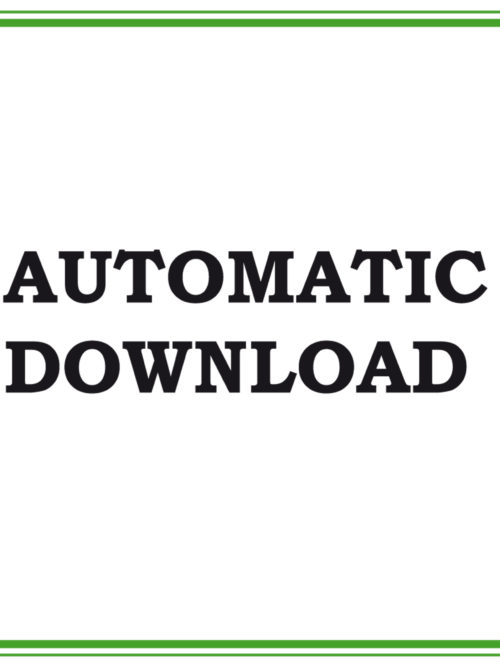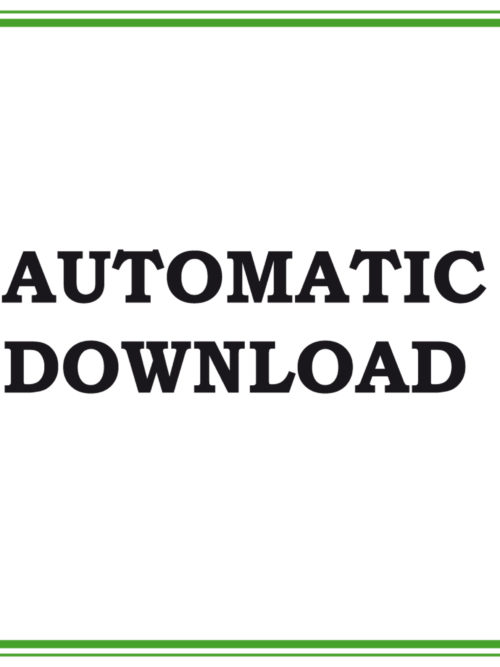-
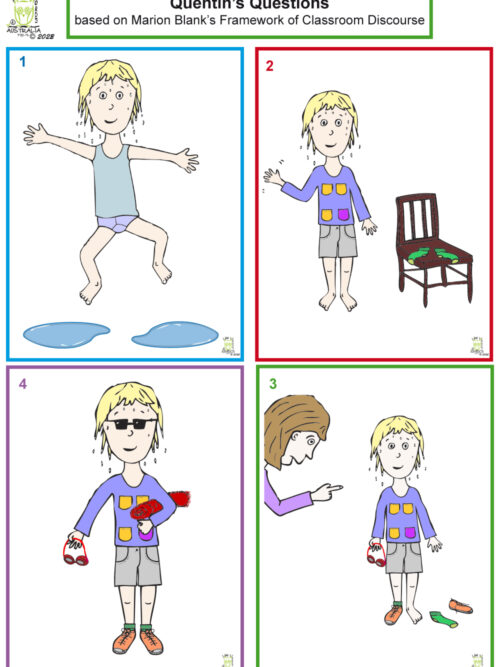 This product includes four picture cards depicting a young boy. Each illustration has accompanying questions at Levels 1, 2, 3 and 4 and are based on Marion Blank’s Model of Classroom Language. (Blank, Rose & Berlin 1978). The cards will provide teachers and clinicians with a useful tool where questions and statements can be quickly tailored to the needs of every child despite differing ages or abilities.
This product includes four picture cards depicting a young boy. Each illustration has accompanying questions at Levels 1, 2, 3 and 4 and are based on Marion Blank’s Model of Classroom Language. (Blank, Rose & Berlin 1978). The cards will provide teachers and clinicians with a useful tool where questions and statements can be quickly tailored to the needs of every child despite differing ages or abilities. -
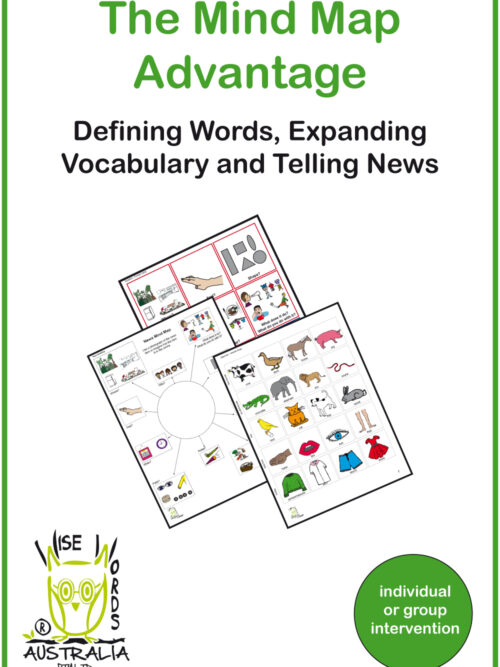
Level 3
The Mind Map Advantage can be used to support a child to understand and answer questions. At the same time, this resource will increase a child’s expressive language. The Mind Map Advantage targets Level 3 of the Blank Model. At this level, a child is required to deal with questions that are more complex and subtle than at earlier levels. For example, the child is not dealing with immediate experiences, as the objects may or may not be present. In order to achieve a correct response, he must use language to restructure and reorder his experiences whilst attending to less prominent information. Although a child may understand the posed question, he may be unable to formulate a definition. This resource uses a fixed framework. It will support children ...- when defining words
- when answering questions
- when asking questions
- who have word-finding difficulties
-
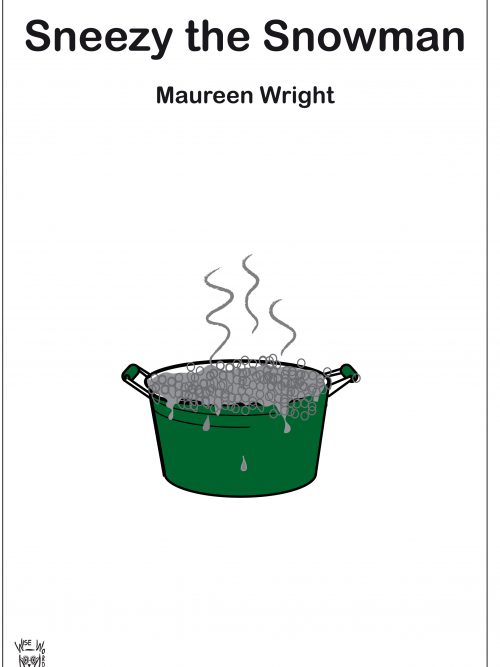 USING BOOKS TO ENHANCE A CHILD'S UNDERSTANDING AND INCREASE HIS/HER EXPRESSIVE LANGUAGE You can use a book to expand a child's • Vocabulary (snowman, shivered, smile, melted, winter, wind) • Understanding of concepts (warm, cold, new, hot, freezing) • Ability to understand questions Wise Words Scripts - offer clinicians, teachers and parents readily available questions designed specifically for each book. A script provides a variety of questions at each level of understanding for each page of the book. A teacher or clinician working with a group of children can tailor questions to each child's language ability. This script and other available scripts have been based on Marion Blank's Model of Classroom Language. Marion Blank recognised the importance of keeping questions and statements within a child’s level of understanding. The more concrete the statement or question, the easier it will be for the child to understand. As questions become more abstract, they become harder for children to answer. The Blank Model is divided into 4 levels of questioning, moving from the concrete (easiest) at Level 1 to the abstract (most difficult) at Level 4.
USING BOOKS TO ENHANCE A CHILD'S UNDERSTANDING AND INCREASE HIS/HER EXPRESSIVE LANGUAGE You can use a book to expand a child's • Vocabulary (snowman, shivered, smile, melted, winter, wind) • Understanding of concepts (warm, cold, new, hot, freezing) • Ability to understand questions Wise Words Scripts - offer clinicians, teachers and parents readily available questions designed specifically for each book. A script provides a variety of questions at each level of understanding for each page of the book. A teacher or clinician working with a group of children can tailor questions to each child's language ability. This script and other available scripts have been based on Marion Blank's Model of Classroom Language. Marion Blank recognised the importance of keeping questions and statements within a child’s level of understanding. The more concrete the statement or question, the easier it will be for the child to understand. As questions become more abstract, they become harder for children to answer. The Blank Model is divided into 4 levels of questioning, moving from the concrete (easiest) at Level 1 to the abstract (most difficult) at Level 4. -
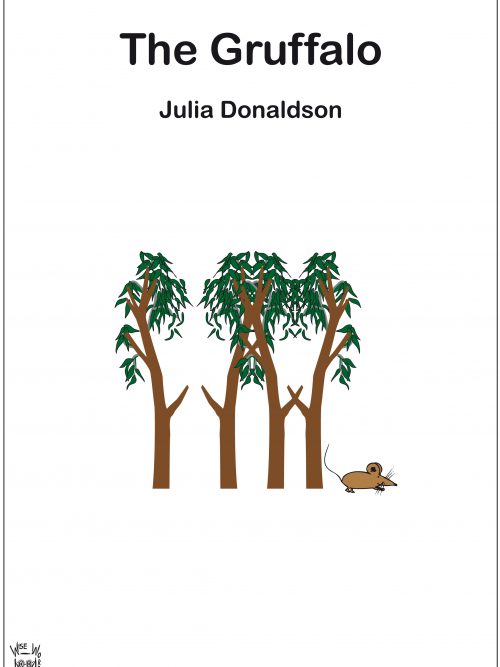 USING BOOKS TO ENHANCE A CHILD'S UNDERSTANDING AND INCREASE HIS/HER EXPRESSIVE LANGUAGE You can use a book to expand a child's • vocabulary (stream, feast, log pile, poisonous, rumble, scrambled) • understanding of concepts (e.g. quick, favourite, good, dark, scariest) • ability to understand questions Wise Words Scripts - offer clinicians, teachers and parents readily available questions designed specifically for each book. A script provides a variety of questions at each level of understanding for each page of the book. A teacher or clinician working with a group of children can tailor questions to each child's language ability. This script and other available scripts have been based on Marion Blank's Model of Classroom Language. Marion Blank recognised the importance of keeping questions and statements within a child’s level of understanding. The more concrete the statement or question, the easier it will be for the child to understand. As questions become more abstract, they become harder for children to answer. The Blank Model is divided into 4 levels of questioning, moving from the concrete (easiest) at Level 1 to the abstract (most difficult) at Level 4.
USING BOOKS TO ENHANCE A CHILD'S UNDERSTANDING AND INCREASE HIS/HER EXPRESSIVE LANGUAGE You can use a book to expand a child's • vocabulary (stream, feast, log pile, poisonous, rumble, scrambled) • understanding of concepts (e.g. quick, favourite, good, dark, scariest) • ability to understand questions Wise Words Scripts - offer clinicians, teachers and parents readily available questions designed specifically for each book. A script provides a variety of questions at each level of understanding for each page of the book. A teacher or clinician working with a group of children can tailor questions to each child's language ability. This script and other available scripts have been based on Marion Blank's Model of Classroom Language. Marion Blank recognised the importance of keeping questions and statements within a child’s level of understanding. The more concrete the statement or question, the easier it will be for the child to understand. As questions become more abstract, they become harder for children to answer. The Blank Model is divided into 4 levels of questioning, moving from the concrete (easiest) at Level 1 to the abstract (most difficult) at Level 4. -
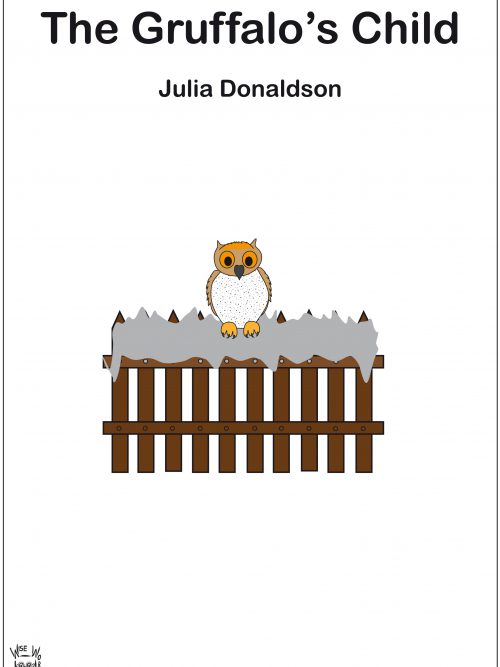 USING BOOKS TO ENHANCE A CHILD'S UNDERSTANDING AND INCREASE HIS/HER EXPRESSIVE LANGUAGE You can use a book to expand your child's • Vocabulary (boulder, trunk, basket, gleamed, log pile) • Understanding of concepts (bored, brave, wild) • Ability to understand questions Wise Words Scripts - offer clinicians, teachers and parents readily available questions designed specifically for each book. A script provides a variety of questions at each level of understanding for each page of the book. A teacher or clinician working with a group of children can tailor questions to each child's language ability. This script and other available scripts have been based on Marion Blank's Model of Classroom Language. Marion Blank recognised the importance of keeping questions and statements within a child’s level of understanding. The more concrete the statement or question, the easier it will be for the child to understand. As questions become more abstract, they become harder for children to answer. The Blank Model is divided into 4 levels of questioning, moving from the concrete (easiest) at Level 1 to the abstract (most difficult) at Level 4.
USING BOOKS TO ENHANCE A CHILD'S UNDERSTANDING AND INCREASE HIS/HER EXPRESSIVE LANGUAGE You can use a book to expand your child's • Vocabulary (boulder, trunk, basket, gleamed, log pile) • Understanding of concepts (bored, brave, wild) • Ability to understand questions Wise Words Scripts - offer clinicians, teachers and parents readily available questions designed specifically for each book. A script provides a variety of questions at each level of understanding for each page of the book. A teacher or clinician working with a group of children can tailor questions to each child's language ability. This script and other available scripts have been based on Marion Blank's Model of Classroom Language. Marion Blank recognised the importance of keeping questions and statements within a child’s level of understanding. The more concrete the statement or question, the easier it will be for the child to understand. As questions become more abstract, they become harder for children to answer. The Blank Model is divided into 4 levels of questioning, moving from the concrete (easiest) at Level 1 to the abstract (most difficult) at Level 4. -
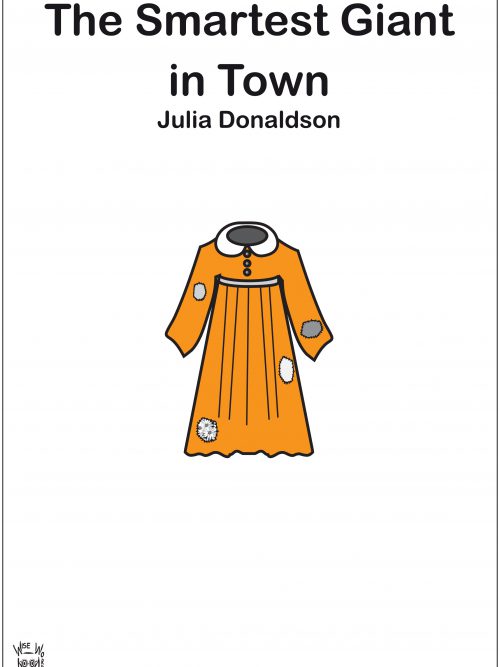 USING BOOKS TO ENHANCE A CHILD'S UNDERSTANDING AND INCREASE HIS/HER EXPRESSIVE LANGUAGE You can use a book to expand your child's • Vocabulary (magnificent, sail, squelchy, sniffing) • Understanding of concepts (cold, round, white, cosy, kind) • Ability to understand questions Wise Words Scripts - offer clinicians, teachers and parents readily available questions designed specifically for each book. A script provides a variety of questions at each level of understanding for each page of the book. A teacher or clinician working with a group of children can tailor questions to each child's language ability. This script and other available scripts have been based on Marion Blank's Model of Classroom Language. Marion Blank recognised the importance of keeping questions and statements within a child’s level of understanding. The more concrete the statement or question, the easier it will be for the child to understand. As questions become more abstract, they become harder for children to answer. The Blank Model is divided into 4 levels of questioning, moving from the concrete (easiest) at Level 1 to the abstract (most difficult) at Level 4.
USING BOOKS TO ENHANCE A CHILD'S UNDERSTANDING AND INCREASE HIS/HER EXPRESSIVE LANGUAGE You can use a book to expand your child's • Vocabulary (magnificent, sail, squelchy, sniffing) • Understanding of concepts (cold, round, white, cosy, kind) • Ability to understand questions Wise Words Scripts - offer clinicians, teachers and parents readily available questions designed specifically for each book. A script provides a variety of questions at each level of understanding for each page of the book. A teacher or clinician working with a group of children can tailor questions to each child's language ability. This script and other available scripts have been based on Marion Blank's Model of Classroom Language. Marion Blank recognised the importance of keeping questions and statements within a child’s level of understanding. The more concrete the statement or question, the easier it will be for the child to understand. As questions become more abstract, they become harder for children to answer. The Blank Model is divided into 4 levels of questioning, moving from the concrete (easiest) at Level 1 to the abstract (most difficult) at Level 4. -
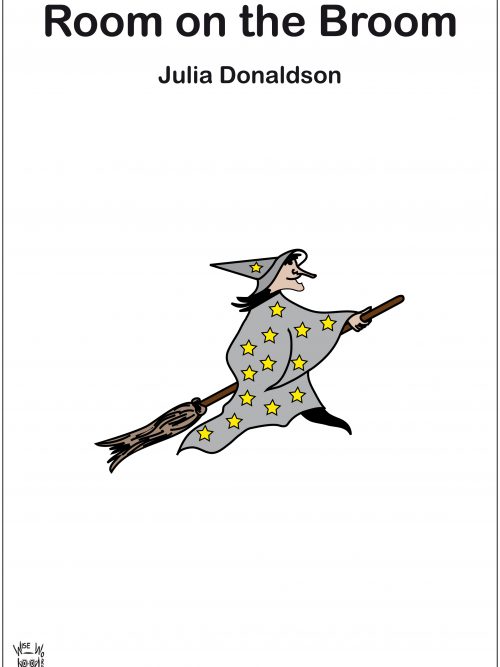 USING BOOKS TO ENHANCE A CHILD'S UNDERSTANDING AND INCREASE HIS/HER EXPRESSIVE LANGUAGE You can use a book to expand a child's • vocabulary (plait, beast, fluttered, cloak, cauldron, bog) • understanding of concepts (storm, tall, scary, clean, politely) • ability to understand questions Wise Words Scripts - offer clinicians, teachers and parents readily available questions designed specifically for each book. A script provides a variety of questions at each level of understanding for each page of the book. A teacher or clinician working with a group of children can tailor questions to each child's language ability. This script and other available scripts have been based on Marion Blank's Model of Classroom Language. Marion Blank recognised the importance of keeping questions and statements within a child’s level of understanding. The more concrete the statement or question, the easier it will be for the child to understand. As questions become more abstract, they become harder for children to answer. The Blank Model is divided into 4 levels of questioning, moving from the concrete (easiest) at Level 1 to the abstract (most difficult) at Level 4.
USING BOOKS TO ENHANCE A CHILD'S UNDERSTANDING AND INCREASE HIS/HER EXPRESSIVE LANGUAGE You can use a book to expand a child's • vocabulary (plait, beast, fluttered, cloak, cauldron, bog) • understanding of concepts (storm, tall, scary, clean, politely) • ability to understand questions Wise Words Scripts - offer clinicians, teachers and parents readily available questions designed specifically for each book. A script provides a variety of questions at each level of understanding for each page of the book. A teacher or clinician working with a group of children can tailor questions to each child's language ability. This script and other available scripts have been based on Marion Blank's Model of Classroom Language. Marion Blank recognised the importance of keeping questions and statements within a child’s level of understanding. The more concrete the statement or question, the easier it will be for the child to understand. As questions become more abstract, they become harder for children to answer. The Blank Model is divided into 4 levels of questioning, moving from the concrete (easiest) at Level 1 to the abstract (most difficult) at Level 4. -
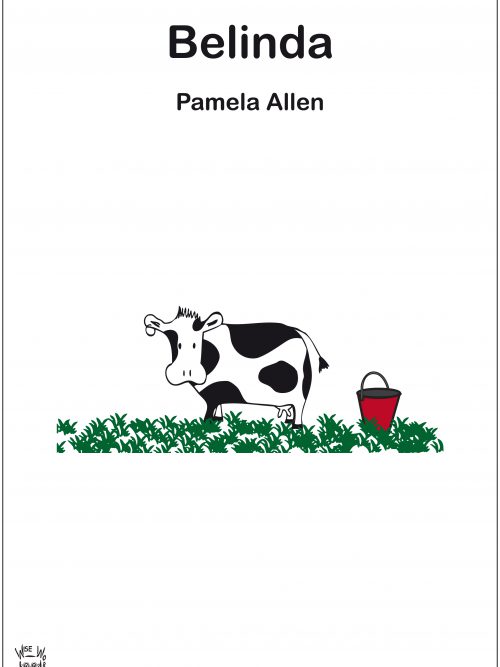 USING BOOKS TO ENHANCE A CHILD'S UNDERSTANDING AND INCREASE HIS/HER EXPRESSIVE LANGUAGE You can use a book to expand a child's • vocabulary (beetroot, paddock, trotting, rope, apron, disguise) • understanding of concepts (e.g. carefully, fattest, pretty, firmly) • ability to understand questions Wise Words Scripts - offer clinicians, teachers and parents readily available questions designed specifically for each book. A script provides a variety of questions at each level of understanding for each page of the book. A teacher or clinician working with a group of children can tailor questions to each child's language ability. This script and other available scripts have been based on Marion Blank's Model of Classroom Language. Marion Blank recognised the importance of keeping questions and statements within a child’s level of understanding. The more concrete the statement or question, the easier it will be for the child to understand. As questions become more abstract, they become harder for children to answer. The Blank Model is divided into 4 levels of questioning, moving from the concrete (easiest) at Level 1 to the abstract (most difficult) at Level 4.
USING BOOKS TO ENHANCE A CHILD'S UNDERSTANDING AND INCREASE HIS/HER EXPRESSIVE LANGUAGE You can use a book to expand a child's • vocabulary (beetroot, paddock, trotting, rope, apron, disguise) • understanding of concepts (e.g. carefully, fattest, pretty, firmly) • ability to understand questions Wise Words Scripts - offer clinicians, teachers and parents readily available questions designed specifically for each book. A script provides a variety of questions at each level of understanding for each page of the book. A teacher or clinician working with a group of children can tailor questions to each child's language ability. This script and other available scripts have been based on Marion Blank's Model of Classroom Language. Marion Blank recognised the importance of keeping questions and statements within a child’s level of understanding. The more concrete the statement or question, the easier it will be for the child to understand. As questions become more abstract, they become harder for children to answer. The Blank Model is divided into 4 levels of questioning, moving from the concrete (easiest) at Level 1 to the abstract (most difficult) at Level 4. -
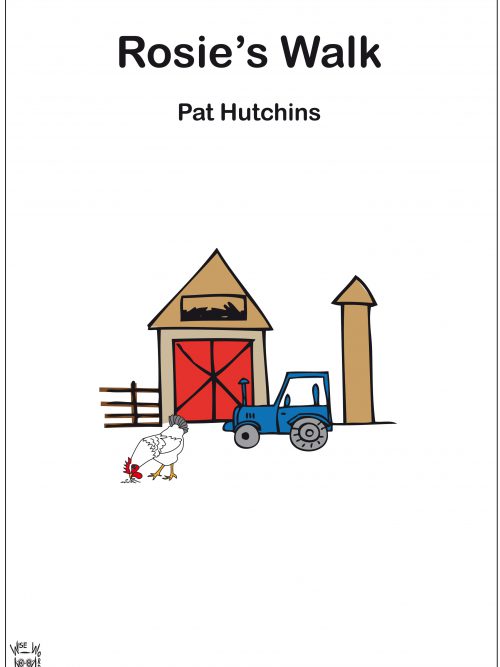 USING BOOKS TO ENHANCE A CHILD'S UNDERSTANDING AND INCREASE HIS/HER EXPRESSIVE LANGUAGE You can use a book to expand a child's • vocabulary (pond, fox, goat, windmill, jumped, stinging) • understanding of concepts (e.g. wet, heavy, light, white, many, through) • ability to understand questions Wise Words Scripts - offer clinicians, teachers and parents readily available questions designed specifically for each book. A script provides a variety of questions at each level of understanding for each page of the book. A teacher or clinician working with a group of children can tailor questions to each child's language ability. This script and other available scripts have been based on Marion Blank's Model of Classroom Language. Marion Blank recognised the importance of keeping questions and statements within a child’s level of understanding. The more concrete the statement or question, the easier it will be for the child to understand. As questions become more abstract, they become harder for children to answer. The Blank Model is divided into 4 levels of questioning, moving from the concrete (easiest) at Level 1 to the abstract (most difficult) at Level 4.
USING BOOKS TO ENHANCE A CHILD'S UNDERSTANDING AND INCREASE HIS/HER EXPRESSIVE LANGUAGE You can use a book to expand a child's • vocabulary (pond, fox, goat, windmill, jumped, stinging) • understanding of concepts (e.g. wet, heavy, light, white, many, through) • ability to understand questions Wise Words Scripts - offer clinicians, teachers and parents readily available questions designed specifically for each book. A script provides a variety of questions at each level of understanding for each page of the book. A teacher or clinician working with a group of children can tailor questions to each child's language ability. This script and other available scripts have been based on Marion Blank's Model of Classroom Language. Marion Blank recognised the importance of keeping questions and statements within a child’s level of understanding. The more concrete the statement or question, the easier it will be for the child to understand. As questions become more abstract, they become harder for children to answer. The Blank Model is divided into 4 levels of questioning, moving from the concrete (easiest) at Level 1 to the abstract (most difficult) at Level 4. -
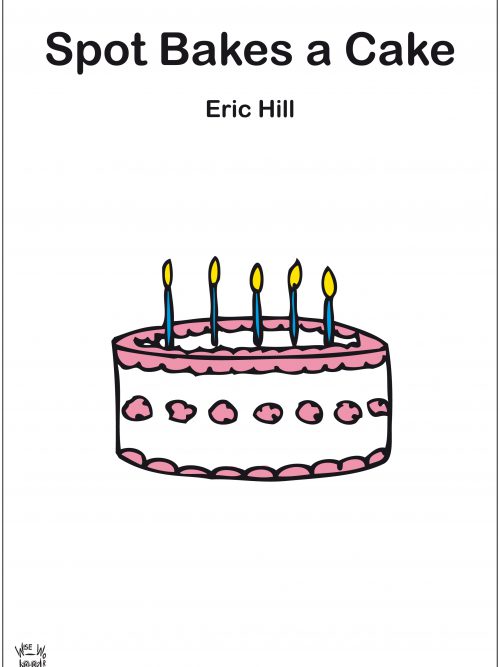 USING BOOKS TO ENHANCE A CHILD'S UNDERSTANDING AND INCREASE HIS/HER EXPRESSIVE LANGUAGE You can use a book to expand a child's • Vocabulary (calendar, trolley, bowl, apron, shopping, mixing, drawing) • Understanding of concepts (messy, sticky, many, hot, delicious) • Ability to understand questions Wise Words Scripts - offer clinicians, teachers and parents readily available questions designed specifically for each book. A script provides a variety of questions at each level of understanding for each page of the book. A teacher or clinician working with a group of children can tailor questions to each child's language ability. This script and other available scripts have been based on Marion Blank's Model of Classroom Language. Marion Blank recognised the importance of keeping questions and statements within a child’s level of understanding. The more concrete the statement or question, the easier it will be for the child to understand. As questions become more abstract, they become harder for children to answer. The Blank Model is divided into 4 levels of questioning, moving from the concrete (easiest) at Level 1 to the abstract (most difficult) at Level 4.
USING BOOKS TO ENHANCE A CHILD'S UNDERSTANDING AND INCREASE HIS/HER EXPRESSIVE LANGUAGE You can use a book to expand a child's • Vocabulary (calendar, trolley, bowl, apron, shopping, mixing, drawing) • Understanding of concepts (messy, sticky, many, hot, delicious) • Ability to understand questions Wise Words Scripts - offer clinicians, teachers and parents readily available questions designed specifically for each book. A script provides a variety of questions at each level of understanding for each page of the book. A teacher or clinician working with a group of children can tailor questions to each child's language ability. This script and other available scripts have been based on Marion Blank's Model of Classroom Language. Marion Blank recognised the importance of keeping questions and statements within a child’s level of understanding. The more concrete the statement or question, the easier it will be for the child to understand. As questions become more abstract, they become harder for children to answer. The Blank Model is divided into 4 levels of questioning, moving from the concrete (easiest) at Level 1 to the abstract (most difficult) at Level 4. -
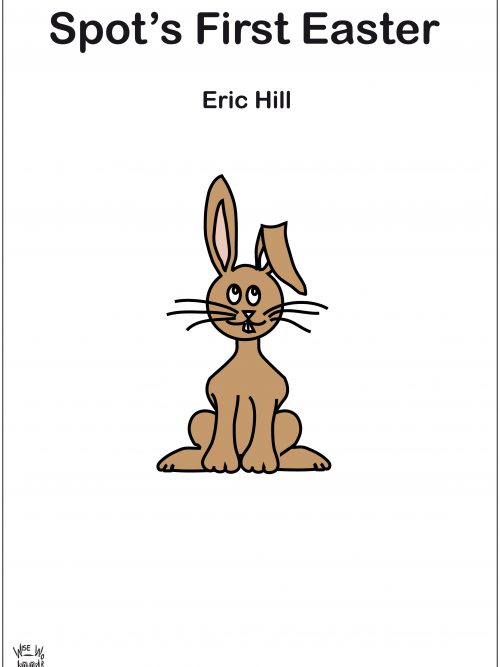 USING BOOKS TO ENHANCE A CHILD'S UNDERSTANDING AND INCREASE HIS/HER EXPRESSIVE LANGUAGE You can use a book to expand a child's • Vocabulary (basket, trowel, snail, finding, bench, sack, core) • Understanding of concepts (under, hungry, angry, behind, crunchy, finished, broken) • Ability to understand questions Wise Words Scripts - offer clinicians, teachers and parents readily available questions designed specifically for each book. A script provides a variety of questions at each level of understanding for each page of the book. A teacher or clinician working with a group of children can tailor questions to each child's language ability. This script and other available scripts have been based on Marion Blank's Model of Classroom Language. Marion Blank recognised the importance of keeping questions and statements within a child’s level of understanding. The more concrete the statement or question, the easier it will be for the child to understand. As questions become more abstract, they become harder for children to answer. The Blank Model is divided into 4 levels of questioning, moving from the concrete (easiest) at Level 1 to the abstract (most difficult) at Level 4.
USING BOOKS TO ENHANCE A CHILD'S UNDERSTANDING AND INCREASE HIS/HER EXPRESSIVE LANGUAGE You can use a book to expand a child's • Vocabulary (basket, trowel, snail, finding, bench, sack, core) • Understanding of concepts (under, hungry, angry, behind, crunchy, finished, broken) • Ability to understand questions Wise Words Scripts - offer clinicians, teachers and parents readily available questions designed specifically for each book. A script provides a variety of questions at each level of understanding for each page of the book. A teacher or clinician working with a group of children can tailor questions to each child's language ability. This script and other available scripts have been based on Marion Blank's Model of Classroom Language. Marion Blank recognised the importance of keeping questions and statements within a child’s level of understanding. The more concrete the statement or question, the easier it will be for the child to understand. As questions become more abstract, they become harder for children to answer. The Blank Model is divided into 4 levels of questioning, moving from the concrete (easiest) at Level 1 to the abstract (most difficult) at Level 4. -
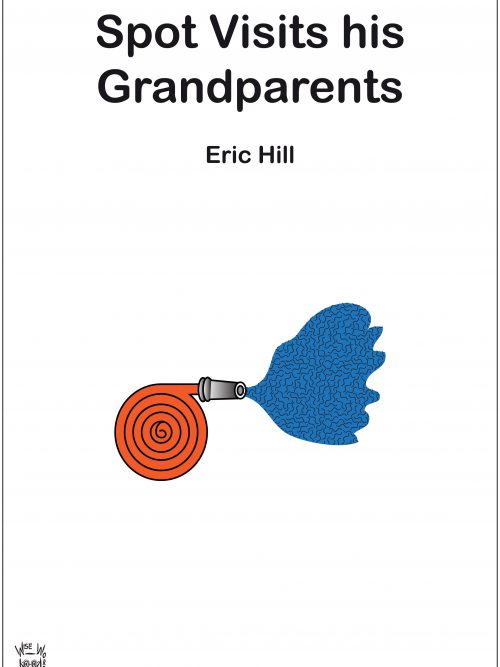 USING BOOKS TO ENHANCE A CHILD'S UNDERSTANDING AND INCREASE HIS/HER EXPRESSIVE LANGUAGE You can use a book to expand a child's • vocabulary (grandparents, shovel, garden fork, spray, eggs, visiting, picking) • understanding of concepts (e..g wet, hidden, broken, hot, comfortable) • ability to understand questions Wise Words Scripts - offer clinicians, teachers and parents readily available questions designed specifically for each book. A script provides a variety of questions at each level of understanding for each page of the book. A teacher or clinician working with a group of children can tailor questions to each child's language ability. This script and other available scripts have been based on Marion Blank's Model of Classroom Language. Marion Blank recognised the importance of keeping questions and statements within a child’s level of understanding. The more concrete the statement or question, the easier it will be for the child to understand. As questions become more abstract, they become harder for children to answer. The Blank Model is divided into 4 levels of questioning, moving from the concrete (easiest) at Level 1 to the abstract (most difficult) at Level 4.
USING BOOKS TO ENHANCE A CHILD'S UNDERSTANDING AND INCREASE HIS/HER EXPRESSIVE LANGUAGE You can use a book to expand a child's • vocabulary (grandparents, shovel, garden fork, spray, eggs, visiting, picking) • understanding of concepts (e..g wet, hidden, broken, hot, comfortable) • ability to understand questions Wise Words Scripts - offer clinicians, teachers and parents readily available questions designed specifically for each book. A script provides a variety of questions at each level of understanding for each page of the book. A teacher or clinician working with a group of children can tailor questions to each child's language ability. This script and other available scripts have been based on Marion Blank's Model of Classroom Language. Marion Blank recognised the importance of keeping questions and statements within a child’s level of understanding. The more concrete the statement or question, the easier it will be for the child to understand. As questions become more abstract, they become harder for children to answer. The Blank Model is divided into 4 levels of questioning, moving from the concrete (easiest) at Level 1 to the abstract (most difficult) at Level 4. -
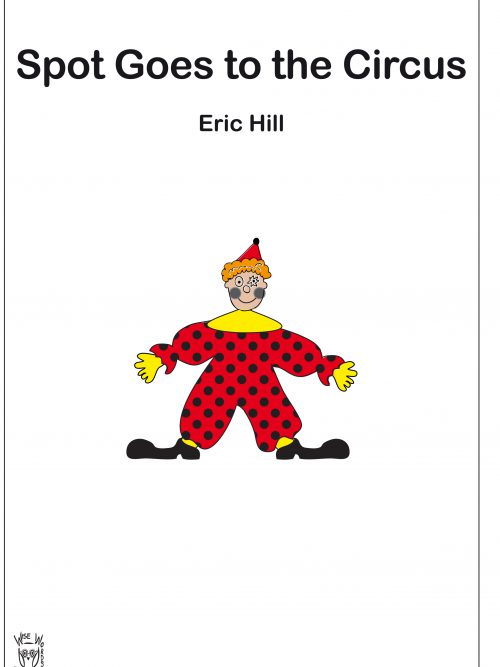 USING BOOKS TO ENHANCE A CHILD'S UNDERSTANDING AND INCREASE HIS/HER EXPRESSIVE LANGUAGE You can use a book to expand a child's • vocabulary (lion, trapeze, cage, balancing, circus, swinging) • understanding of concepts (e.g. high, difficult, scary, easy, large) • ability to understand questions Wise Words Scripts - offer clinicians, teachers and parents readily available questions designed specifically for each book. A script provides a variety of questions at each level of understanding for each page of the book. A teacher or clinician working with a group of children can tailor questions to each child's language ability. This script and other available scripts have been based on Marion Blank's Model of Classroom Language. Marion Blank recognised the importance of keeping questions and statements within a child’s level of understanding. The more concrete the statement or question, the easier it will be for the child to understand. As questions become more abstract, they become harder for children to answer. The Blank Model is divided into 4 levels of questioning, moving from the concrete (easiest) at Level 1 to the abstract (most difficult) at Level 4.
USING BOOKS TO ENHANCE A CHILD'S UNDERSTANDING AND INCREASE HIS/HER EXPRESSIVE LANGUAGE You can use a book to expand a child's • vocabulary (lion, trapeze, cage, balancing, circus, swinging) • understanding of concepts (e.g. high, difficult, scary, easy, large) • ability to understand questions Wise Words Scripts - offer clinicians, teachers and parents readily available questions designed specifically for each book. A script provides a variety of questions at each level of understanding for each page of the book. A teacher or clinician working with a group of children can tailor questions to each child's language ability. This script and other available scripts have been based on Marion Blank's Model of Classroom Language. Marion Blank recognised the importance of keeping questions and statements within a child’s level of understanding. The more concrete the statement or question, the easier it will be for the child to understand. As questions become more abstract, they become harder for children to answer. The Blank Model is divided into 4 levels of questioning, moving from the concrete (easiest) at Level 1 to the abstract (most difficult) at Level 4. -
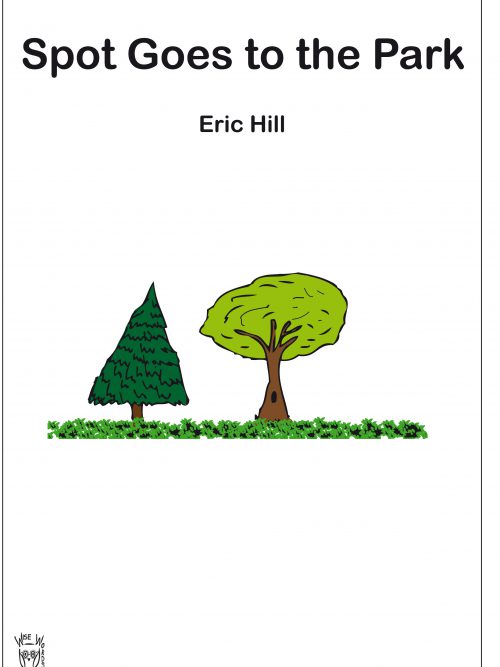 USING BOOKS TO ENHANCE A CHILD'S UNDERSTANDING AND INCREASE HIS/HER EXPRESSIVE LANGUAGE You can use a book to expand a child's • vocabulary (park, cards, wagging, looking, gate, scaring, newspaper) • understanding of concepts (e.g. accident, high, over, grateful, frightened) • ability to understand questions Wise Words Scripts - offer clinicians, teachers and parents readily available questions designed specifically for each book. A script provides a variety of questions at each level of understanding for each page of the book. A teacher or clinician working with a group of children can tailor questions to each child's language ability. This script and other available scripts have been based on Marion Blank's Model of Classroom Language. Marion Blank recognised the importance of keeping questions and statements within a child’s level of understanding. The more concrete the statement or question, the easier it will be for the child to understand. As questions become more abstract, they become harder for children to answer. The Blank Model is divided into 4 levels of questioning, moving from the concrete (easiest) at Level 1 to the abstract (most difficult) at Level 4.
USING BOOKS TO ENHANCE A CHILD'S UNDERSTANDING AND INCREASE HIS/HER EXPRESSIVE LANGUAGE You can use a book to expand a child's • vocabulary (park, cards, wagging, looking, gate, scaring, newspaper) • understanding of concepts (e.g. accident, high, over, grateful, frightened) • ability to understand questions Wise Words Scripts - offer clinicians, teachers and parents readily available questions designed specifically for each book. A script provides a variety of questions at each level of understanding for each page of the book. A teacher or clinician working with a group of children can tailor questions to each child's language ability. This script and other available scripts have been based on Marion Blank's Model of Classroom Language. Marion Blank recognised the importance of keeping questions and statements within a child’s level of understanding. The more concrete the statement or question, the easier it will be for the child to understand. As questions become more abstract, they become harder for children to answer. The Blank Model is divided into 4 levels of questioning, moving from the concrete (easiest) at Level 1 to the abstract (most difficult) at Level 4. -
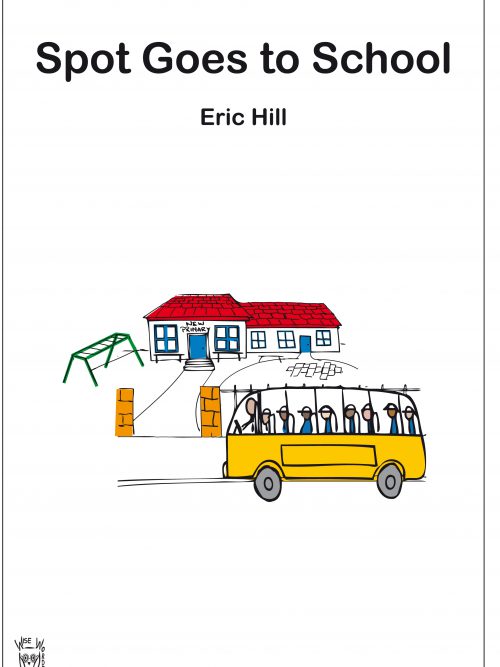 USING BOOKS TO ENHANCE A CHILD'S UNDERSTANDING AND INCREASE HIS/HER EXPRESSIVE LANGUAGE You can use a book to expand a child's • vocabulary (easel, paints, bell, singing, drawing, cubby house, chimney) • understanding of concepts (e.g. sad, prickly, up, under, heavy, mess) • ability to understand questions Wise Words Scripts - offer clinicians, teachers and parents readily available questions designed specifically for each book. A script provides a variety of questions at each level of understanding for each page of the book. A teacher or clinician working with a group of children can tailor questions to each child's language ability. This script and other available scripts have been based on Marion Blank's Model of Classroom Language. Marion Blank recognised the importance of keeping questions and statements within a child’s level of understanding. The more concrete the statement or question, the easier it will be for the child to understand. As questions become more abstract, they become harder for children to answer. The Blank Model is divided into 4 levels of questioning, moving from the concrete (easiest) at Level 1 to the abstract (most difficult) at Level 4.
USING BOOKS TO ENHANCE A CHILD'S UNDERSTANDING AND INCREASE HIS/HER EXPRESSIVE LANGUAGE You can use a book to expand a child's • vocabulary (easel, paints, bell, singing, drawing, cubby house, chimney) • understanding of concepts (e.g. sad, prickly, up, under, heavy, mess) • ability to understand questions Wise Words Scripts - offer clinicians, teachers and parents readily available questions designed specifically for each book. A script provides a variety of questions at each level of understanding for each page of the book. A teacher or clinician working with a group of children can tailor questions to each child's language ability. This script and other available scripts have been based on Marion Blank's Model of Classroom Language. Marion Blank recognised the importance of keeping questions and statements within a child’s level of understanding. The more concrete the statement or question, the easier it will be for the child to understand. As questions become more abstract, they become harder for children to answer. The Blank Model is divided into 4 levels of questioning, moving from the concrete (easiest) at Level 1 to the abstract (most difficult) at Level 4. -
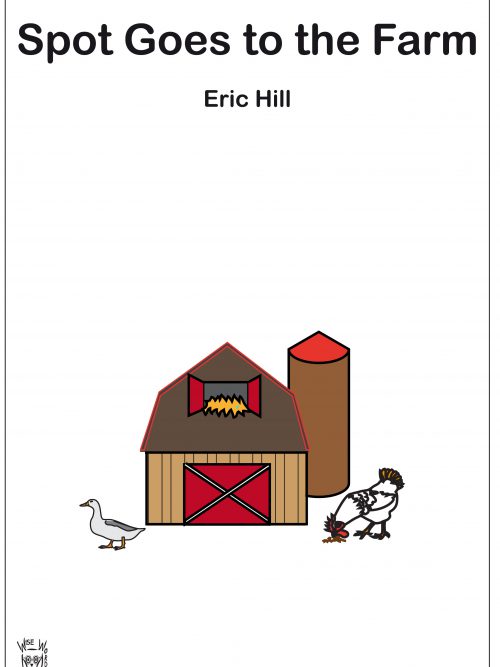 USING BOOKS TO ENHANCE A CHILD'S UNDERSTANDING AND INCREASE HIS/HER EXPRESSIVE LANGUAGE You can use a book to expand a child's • vocabulary (tractor, driving, wheels, stable, bucket, straw, sheep, pegs) • understanding of concepts (e.g. wet, dry, soft, behind, in) • ability to understand questions Wise Words Scripts - offer clinicians, teachers and parents readily available questions designed specifically for each book. A script provides a variety of questions at each level of understanding for each page of the book. A teacher or clinician working with a group of children can tailor questions to each child's language ability. This script and other available scripts have been based on Marion Blank's Model of Classroom Language. Marion Blank recognised the importance of keeping questions and statements within a child’s level of understanding. The more concrete the statement or question, the easier it will be for the child to understand. As questions become more abstract, they become harder for children to answer. The Blank Model is divided into 4 levels of questioning, moving from the concrete (easiest) at Level 1 to the abstract (most difficult) at Level 4.
USING BOOKS TO ENHANCE A CHILD'S UNDERSTANDING AND INCREASE HIS/HER EXPRESSIVE LANGUAGE You can use a book to expand a child's • vocabulary (tractor, driving, wheels, stable, bucket, straw, sheep, pegs) • understanding of concepts (e.g. wet, dry, soft, behind, in) • ability to understand questions Wise Words Scripts - offer clinicians, teachers and parents readily available questions designed specifically for each book. A script provides a variety of questions at each level of understanding for each page of the book. A teacher or clinician working with a group of children can tailor questions to each child's language ability. This script and other available scripts have been based on Marion Blank's Model of Classroom Language. Marion Blank recognised the importance of keeping questions and statements within a child’s level of understanding. The more concrete the statement or question, the easier it will be for the child to understand. As questions become more abstract, they become harder for children to answer. The Blank Model is divided into 4 levels of questioning, moving from the concrete (easiest) at Level 1 to the abstract (most difficult) at Level 4. -
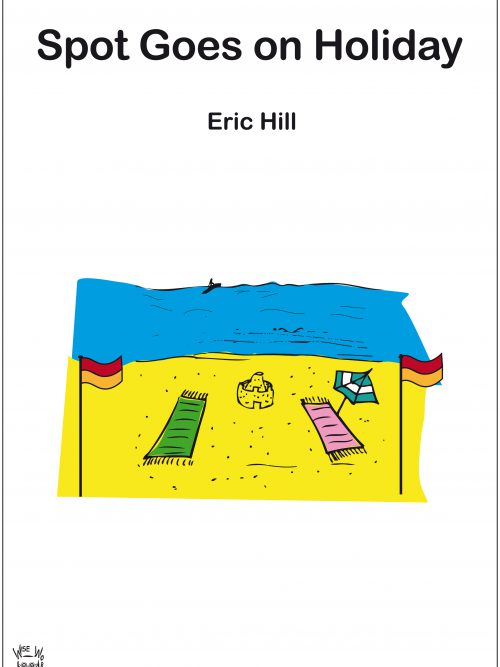 USING BOOKS TO ENHANCE A CHILD'S UNDERSTANDING AND INCREASE HIS/HER EXPRESSIVE LANGUAGE You can use a book to expand a child's • Vocabulary (seagull, beach, towel, fishing net, wave, rowing) • Understanding of concepts (wet, sandy, angry) • Ability to understand questions Wise Words Scripts - offer clinicians, teachers and parents readily available questions designed specifically for each book. A script provides a variety of questions at each level of understanding for each page of the book. A teacher or clinician working with a group of children can tailor questions to each child's language ability. This script and other available scripts have been based on Marion Blank's Model of Classroom Language. Marion Blank recognised the importance of keeping questions and statements within a child’s level of understanding. The more concrete the statement or question, the easier it will be for the child to understand. As questions become more abstract, they become harder for children to answer. The Blank Model is divided into 4 levels of questioning, moving from the concrete (easiest) at Level 1 to the abstract (most difficult) at Level 4.
USING BOOKS TO ENHANCE A CHILD'S UNDERSTANDING AND INCREASE HIS/HER EXPRESSIVE LANGUAGE You can use a book to expand a child's • Vocabulary (seagull, beach, towel, fishing net, wave, rowing) • Understanding of concepts (wet, sandy, angry) • Ability to understand questions Wise Words Scripts - offer clinicians, teachers and parents readily available questions designed specifically for each book. A script provides a variety of questions at each level of understanding for each page of the book. A teacher or clinician working with a group of children can tailor questions to each child's language ability. This script and other available scripts have been based on Marion Blank's Model of Classroom Language. Marion Blank recognised the importance of keeping questions and statements within a child’s level of understanding. The more concrete the statement or question, the easier it will be for the child to understand. As questions become more abstract, they become harder for children to answer. The Blank Model is divided into 4 levels of questioning, moving from the concrete (easiest) at Level 1 to the abstract (most difficult) at Level 4. -
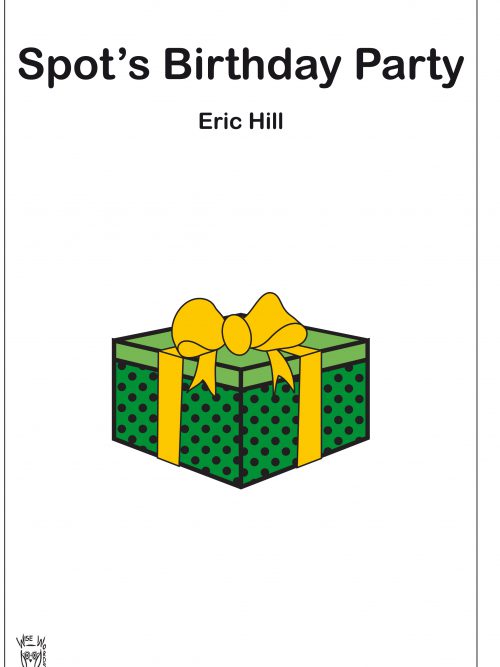 USING BOOKS TO ENHANCE A CHILD'S UNDERSTANDING AND INCREASE HIS/HER EXPRESSIVE LANGUAGE You can use a book to expand a child's • vocabulary (crocodile, lamp, crown, curtain, jelly, lead, umbrella) • understanding of concepts (e.g. loud, large, under, round, messy) • ability to understand questions Wise Words Scripts - offer clinicians, teachers and parents readily available questions designed specifically for each book. A script provides a variety of questions at each level of understanding for each page of the book. A teacher or clinician working with a group of children can tailor questions to each child's language ability. This script and other available scripts have been based on Marion Blank's Model of Classroom Language. Marion Blank recognised the importance of keeping questions and statements within a child’s level of understanding. The more concrete the statement or question, the easier it will be for the child to understand. As questions become more abstract, they become harder for children to answer. The Blank Model is divided into 4 levels of questioning, moving from the concrete (easiest) at Level 1 to the abstract (most difficult) at Level 4.
USING BOOKS TO ENHANCE A CHILD'S UNDERSTANDING AND INCREASE HIS/HER EXPRESSIVE LANGUAGE You can use a book to expand a child's • vocabulary (crocodile, lamp, crown, curtain, jelly, lead, umbrella) • understanding of concepts (e.g. loud, large, under, round, messy) • ability to understand questions Wise Words Scripts - offer clinicians, teachers and parents readily available questions designed specifically for each book. A script provides a variety of questions at each level of understanding for each page of the book. A teacher or clinician working with a group of children can tailor questions to each child's language ability. This script and other available scripts have been based on Marion Blank's Model of Classroom Language. Marion Blank recognised the importance of keeping questions and statements within a child’s level of understanding. The more concrete the statement or question, the easier it will be for the child to understand. As questions become more abstract, they become harder for children to answer. The Blank Model is divided into 4 levels of questioning, moving from the concrete (easiest) at Level 1 to the abstract (most difficult) at Level 4. -
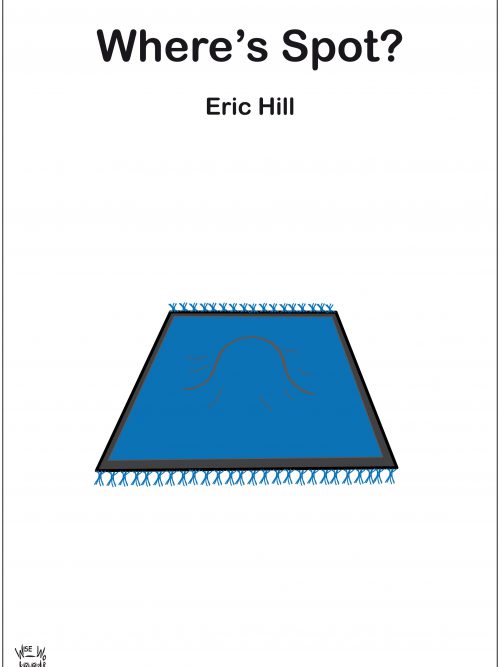 USING BOOKS TO ENHANCE A CHILD'S UNDERSTANDING AND INCREASE HIS/HER EXPRESSIVE LANGUAGE You can use a book to expand a child's • vocabulary (honey, clock, piano, hippo, eating, racing, basket, rug) • understanding of concepts (e.g. empty, hungry, under, in, naughty) • ability to understand questions Wise Words Scripts - offer clinicians, teachers and parents readily available questions designed specifically for each book. A script provides a variety of questions at each level of understanding for each page of the book. A teacher or clinician working with a group of children can tailor questions to each child's language ability. This script and other available scripts have been based on Marion Blank's Model of Classroom Language. Marion Blank recognised the importance of keeping questions and statements within a child’s level of understanding. The more concrete the statement or question, the easier it will be for the child to understand. As questions become more abstract, they become harder for children to answer. The Blank Model is divided into 4 levels of questioning, moving from the concrete (easiest) at Level 1 to the abstract (most difficult) at Level 4.
USING BOOKS TO ENHANCE A CHILD'S UNDERSTANDING AND INCREASE HIS/HER EXPRESSIVE LANGUAGE You can use a book to expand a child's • vocabulary (honey, clock, piano, hippo, eating, racing, basket, rug) • understanding of concepts (e.g. empty, hungry, under, in, naughty) • ability to understand questions Wise Words Scripts - offer clinicians, teachers and parents readily available questions designed specifically for each book. A script provides a variety of questions at each level of understanding for each page of the book. A teacher or clinician working with a group of children can tailor questions to each child's language ability. This script and other available scripts have been based on Marion Blank's Model of Classroom Language. Marion Blank recognised the importance of keeping questions and statements within a child’s level of understanding. The more concrete the statement or question, the easier it will be for the child to understand. As questions become more abstract, they become harder for children to answer. The Blank Model is divided into 4 levels of questioning, moving from the concrete (easiest) at Level 1 to the abstract (most difficult) at Level 4. -
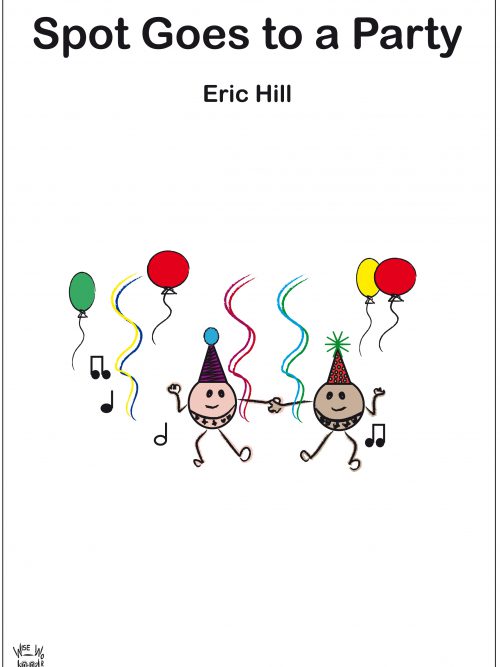 USING BOOKS TO ENHANCE A CHILD'S UNDERSTANDING AND INCREASE HIS/HER EXPRESSIVE LANGUAGE You can use a book to expand a child's • vocabulary (invitation, balloons, riding, dancing, horse) • understanding of concepts (e.g. inside, under, surprised, all) • ability to understand questions Wise Words Scripts - offer clinicians, teachers and parents readily available questions designed specifically for each book. A script provides a variety of questions at each level of understanding for each page of the book. A teacher or clinician working with a group of children can tailor questions to each child's language ability. This script and other available scripts have been based on Marion Blank's Model of Classroom Language. Marion Blank recognised the importance of keeping questions and statements within a child’s level of understanding. The more concrete the statement or question, the easier it will be for the child to understand. As questions become more abstract, they become harder for children to answer. The Blank Model is divided into 4 levels of questioning, moving from the concrete (easiest) at Level 1 to the abstract (most difficult) at Level 4.
USING BOOKS TO ENHANCE A CHILD'S UNDERSTANDING AND INCREASE HIS/HER EXPRESSIVE LANGUAGE You can use a book to expand a child's • vocabulary (invitation, balloons, riding, dancing, horse) • understanding of concepts (e.g. inside, under, surprised, all) • ability to understand questions Wise Words Scripts - offer clinicians, teachers and parents readily available questions designed specifically for each book. A script provides a variety of questions at each level of understanding for each page of the book. A teacher or clinician working with a group of children can tailor questions to each child's language ability. This script and other available scripts have been based on Marion Blank's Model of Classroom Language. Marion Blank recognised the importance of keeping questions and statements within a child’s level of understanding. The more concrete the statement or question, the easier it will be for the child to understand. As questions become more abstract, they become harder for children to answer. The Blank Model is divided into 4 levels of questioning, moving from the concrete (easiest) at Level 1 to the abstract (most difficult) at Level 4. -
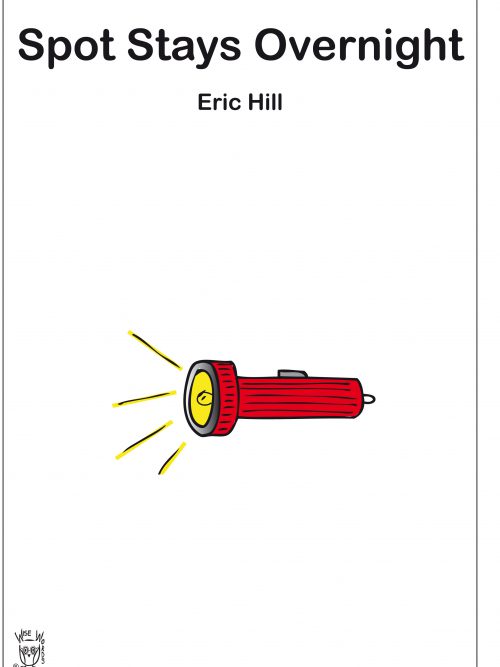 USING BOOKS TO ENHANCE A CHILD'S UNDERSTANDING AND INCREASE HIS/HER EXPRESSIVE LANGUAGE You can use a book to expand a child's • vocabulary (binoculars, torch, branch, sleeping bag, swinging, sliding) • understanding of concepts (e.g. favourite, slippery, high, tired, late) • ability to understand questions Wise Words Scripts - offer clinicians, teachers and parents readily available questions designed specifically for each book. A script provides a variety of questions at each level of understanding for each page of the book. A teacher or clinician working with a group of children can tailor questions to each child's language ability. This script and other available scripts have been based on Marion Blank's Model of Classroom Language. Marion Blank recognised the importance of keeping questions and statements within a child’s level of understanding. The more concrete the statement or question, the easier it will be for the child to understand. As questions become more abstract, they become harder for children to answer. The Blank Model is divided into 4 levels of questioning, moving from the concrete (easiest) at Level 1 to the abstract (most difficult) at Level 4.
USING BOOKS TO ENHANCE A CHILD'S UNDERSTANDING AND INCREASE HIS/HER EXPRESSIVE LANGUAGE You can use a book to expand a child's • vocabulary (binoculars, torch, branch, sleeping bag, swinging, sliding) • understanding of concepts (e.g. favourite, slippery, high, tired, late) • ability to understand questions Wise Words Scripts - offer clinicians, teachers and parents readily available questions designed specifically for each book. A script provides a variety of questions at each level of understanding for each page of the book. A teacher or clinician working with a group of children can tailor questions to each child's language ability. This script and other available scripts have been based on Marion Blank's Model of Classroom Language. Marion Blank recognised the importance of keeping questions and statements within a child’s level of understanding. The more concrete the statement or question, the easier it will be for the child to understand. As questions become more abstract, they become harder for children to answer. The Blank Model is divided into 4 levels of questioning, moving from the concrete (easiest) at Level 1 to the abstract (most difficult) at Level 4. -
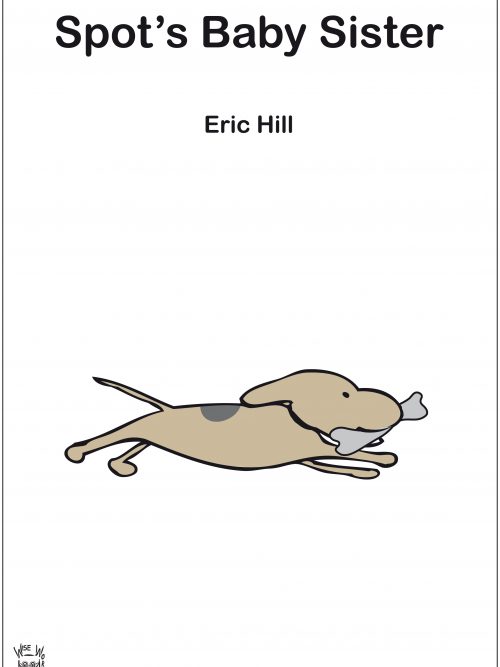 USING BOOKS TO ENHANCE A CHILD'S UNDERSTANDING AND INCREASE HIS/HER EXPRESSIVE LANGUAGE You can use a book to expand a child's • Vocabulary (armchair, bone, running, hiding, searching) • Understanding of concepts (e.g. tired, naughty, under) • Ability to understand questions Wise Words Scripts - offer clinicians, teachers and parents readily available questions designed specifically for each book. A script provides a variety of questions at each level of understanding for each page of the book. A teacher or clinician working with a group of children can tailor questions to each child's language ability. This script and other available scripts have been based on Marion Blank's Model of Classroom Language. Marion Blank recognised the importance of keeping questions and statements within a child’s level of understanding. The more concrete the statement or question, the easier it will be for the child to understand. As questions become more abstract, they become harder for children to answer. The Blank Model is divided into 4 levels of questioning, moving from the concrete (easiest) at Level 1 to the abstract (most difficult) at Level 4.
USING BOOKS TO ENHANCE A CHILD'S UNDERSTANDING AND INCREASE HIS/HER EXPRESSIVE LANGUAGE You can use a book to expand a child's • Vocabulary (armchair, bone, running, hiding, searching) • Understanding of concepts (e.g. tired, naughty, under) • Ability to understand questions Wise Words Scripts - offer clinicians, teachers and parents readily available questions designed specifically for each book. A script provides a variety of questions at each level of understanding for each page of the book. A teacher or clinician working with a group of children can tailor questions to each child's language ability. This script and other available scripts have been based on Marion Blank's Model of Classroom Language. Marion Blank recognised the importance of keeping questions and statements within a child’s level of understanding. The more concrete the statement or question, the easier it will be for the child to understand. As questions become more abstract, they become harder for children to answer. The Blank Model is divided into 4 levels of questioning, moving from the concrete (easiest) at Level 1 to the abstract (most difficult) at Level 4. -
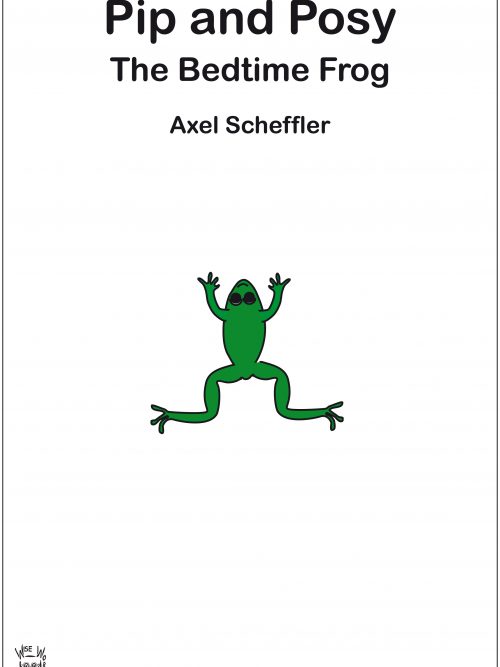 USING BOOKS TO ENHANCE A CHILD'S UNDERSTANDING AND INCREASE HIS/HER EXPRESSIVE LANGUAGE You can use a book to expand a child's • Vocabulary (stool, kennel, basket, sty, reaching, searching) • Understanding of concepts (e.g. big - little, wet - dry, nearly, scary, funny) • Ability to understand questions Wise Words Scripts - offer clinicians, teachers and parents readily available questions designed specifically for each book. A script provides a variety of questions at each level of understanding for each page of the book. A teacher or clinician working with a group of children can tailor questions to each child's language ability. This script and other available scripts have been based on Marion Blank's Model of Classroom Language. Marion Blank recognised the importance of keeping questions and statements within a child’s level of understanding. The more concrete the statement or question, the easier it will be for the child to understand. As questions become more abstract, they become harder for children to answer. The Blank Model is divided into 4 levels of questioning, moving from the concrete (easiest) at Level 1 to the abstract (most difficult) at Level 4.
USING BOOKS TO ENHANCE A CHILD'S UNDERSTANDING AND INCREASE HIS/HER EXPRESSIVE LANGUAGE You can use a book to expand a child's • Vocabulary (stool, kennel, basket, sty, reaching, searching) • Understanding of concepts (e.g. big - little, wet - dry, nearly, scary, funny) • Ability to understand questions Wise Words Scripts - offer clinicians, teachers and parents readily available questions designed specifically for each book. A script provides a variety of questions at each level of understanding for each page of the book. A teacher or clinician working with a group of children can tailor questions to each child's language ability. This script and other available scripts have been based on Marion Blank's Model of Classroom Language. Marion Blank recognised the importance of keeping questions and statements within a child’s level of understanding. The more concrete the statement or question, the easier it will be for the child to understand. As questions become more abstract, they become harder for children to answer. The Blank Model is divided into 4 levels of questioning, moving from the concrete (easiest) at Level 1 to the abstract (most difficult) at Level 4. -
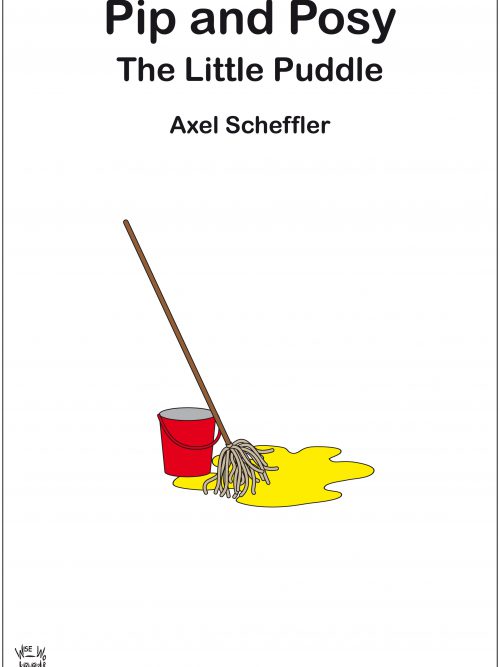 USING BOOKS TO ENHANCE A CHILD'S UNDERSTANDING AND INCREASE HIS/HER EXPRESSIVE LANGUAGE You can use a book to expand a child's • Vocabulary (magnificent, sail, squelchy, sniffing, pretending) • Understanding of concepts (e.g. cold, round, white, cosy, kind, sometimes) • Ability to understand questions Wise Words Scripts - offer clinicians, teachers and parents readily available questions designed specifically for each book. A script provides a variety of questions at each level of understanding for each page of the book. A teacher or clinician working with a group of children can tailor questions to each child's language ability. This script and other available scripts have been based on Marion Blank's Model of Classroom Language. Marion Blank recognised the importance of keeping questions and statements within a child’s level of understanding. The more concrete the statement or question, the easier it will be for the child to understand. As questions become more abstract, they become harder for children to answer. The Blank Model is divided into 4 levels of questioning, moving from the concrete (easiest) at Level 1 to the abstract (most difficult) at Level 4.
USING BOOKS TO ENHANCE A CHILD'S UNDERSTANDING AND INCREASE HIS/HER EXPRESSIVE LANGUAGE You can use a book to expand a child's • Vocabulary (magnificent, sail, squelchy, sniffing, pretending) • Understanding of concepts (e.g. cold, round, white, cosy, kind, sometimes) • Ability to understand questions Wise Words Scripts - offer clinicians, teachers and parents readily available questions designed specifically for each book. A script provides a variety of questions at each level of understanding for each page of the book. A teacher or clinician working with a group of children can tailor questions to each child's language ability. This script and other available scripts have been based on Marion Blank's Model of Classroom Language. Marion Blank recognised the importance of keeping questions and statements within a child’s level of understanding. The more concrete the statement or question, the easier it will be for the child to understand. As questions become more abstract, they become harder for children to answer. The Blank Model is divided into 4 levels of questioning, moving from the concrete (easiest) at Level 1 to the abstract (most difficult) at Level 4. -
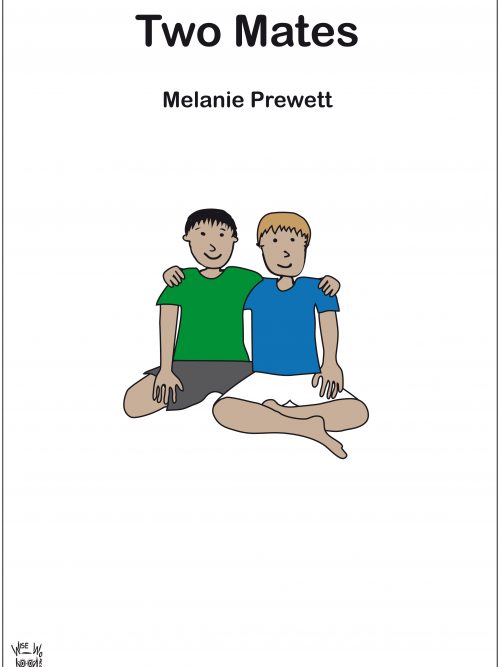 Wise Words indigenous materials have been devised to support parents, teachers and clinicians who may find it challenging to teach indigenous content because of concerns that they may not have the knowledge or understanding to ensure that the books, their stories and the complexity of the information is presented in a respectful and appropriate manner. With thanks to Tara Lewis who kindly edited these resources. Tara Lewis is a Speech Pathologist and member of Speech Pathology Australia's Aboriginal and Torres Strait Islander Advisory Committee. Tara is an Iman woman from the Taroom country of Western Queensland. The Australian Curriculum has established Aboriginal and Torres Strait Islander histories and cultures as a priority. This will ensure that Aboriginal and Torres Strait Islander students are able to see themselves, their identities and their cultures reflected in the curriculum of each of the learning areas. Exposure to these and other indigenous books can build awareness of and respect for Aboriginal and Torres Strait Islander histories and cultures amongst all Australian children. USING BOOKS TO ENHANCE A CHILD'S UNDERSTANDING AND INCREASE HIS/HER EXPRESSIVE LANGUAGE You can use a book to expand a child's • Vocabulary (galaxy, mudskippers, feathers, tide, goanna) • Understanding of concepts (e.g. lucky, fresh, silly, first) • Ability to understand questions Two Mates is the true story of the special friendship between two young boys who have grown up together in the coastal town of Broome in Australia's north-west. The book describes their lives and how each boy recognises the special talents of each other. Jack is Aboriginal and Raf is a non-Aboriginal boy who has spina bifida. Wise Words Scripts - offer clinicians, teachers and parents readily available questions designed specifically for each book. A script provides a variety of questions at each level of understanding for each page of the book. A teacher or clinician working with a group of children can tailor questions to each child's language ability. This script and other available scripts have been based on Marion Blank's Model of Classroom Language.
Wise Words indigenous materials have been devised to support parents, teachers and clinicians who may find it challenging to teach indigenous content because of concerns that they may not have the knowledge or understanding to ensure that the books, their stories and the complexity of the information is presented in a respectful and appropriate manner. With thanks to Tara Lewis who kindly edited these resources. Tara Lewis is a Speech Pathologist and member of Speech Pathology Australia's Aboriginal and Torres Strait Islander Advisory Committee. Tara is an Iman woman from the Taroom country of Western Queensland. The Australian Curriculum has established Aboriginal and Torres Strait Islander histories and cultures as a priority. This will ensure that Aboriginal and Torres Strait Islander students are able to see themselves, their identities and their cultures reflected in the curriculum of each of the learning areas. Exposure to these and other indigenous books can build awareness of and respect for Aboriginal and Torres Strait Islander histories and cultures amongst all Australian children. USING BOOKS TO ENHANCE A CHILD'S UNDERSTANDING AND INCREASE HIS/HER EXPRESSIVE LANGUAGE You can use a book to expand a child's • Vocabulary (galaxy, mudskippers, feathers, tide, goanna) • Understanding of concepts (e.g. lucky, fresh, silly, first) • Ability to understand questions Two Mates is the true story of the special friendship between two young boys who have grown up together in the coastal town of Broome in Australia's north-west. The book describes their lives and how each boy recognises the special talents of each other. Jack is Aboriginal and Raf is a non-Aboriginal boy who has spina bifida. Wise Words Scripts - offer clinicians, teachers and parents readily available questions designed specifically for each book. A script provides a variety of questions at each level of understanding for each page of the book. A teacher or clinician working with a group of children can tailor questions to each child's language ability. This script and other available scripts have been based on Marion Blank's Model of Classroom Language. -
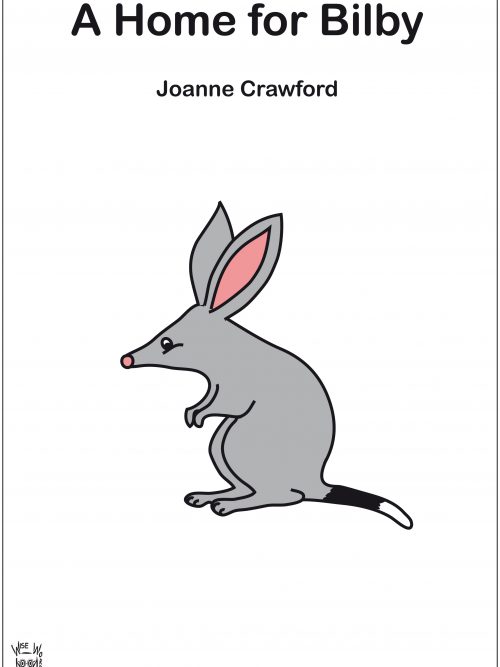 Wise Words indigenous materials have been devised to support parents, teachers and clinicians who may find it challenging to teach indigenous content because of concerns that they may not have the knowledge or understanding to ensure that the books, their stories and the complexity of the information is presented in a respectful and appropriate manner. With thanks to Tara Lewis who kindly edited these resources. Tara Lewis is a Speech Pathologist and member of Speech Pathology Australia's Aboriginal and Torres Strait Islander Advisory Committee. Tara is an Iman woman from the Taroom country of Western Queensland. The Australian Curriculum has established Aboriginal and Torres Strait Islander histories and cultures as a priority. This will ensure that Aboriginal and Torres Strait Islander students are able to see themselves, their identities and their cultures reflected in the curriculum of each of the learning areas. Exposure to these and other indigenous books can build awareness of and respect for Aboriginal and Torres Strait Islander histories and cultures amongst all Australian children. USING BOOKS TO ENHANCE A CHILD'S UNDERSTANDING AND INCREASE HIS/HER EXPRESSIVE LANGUAGE You can use a book to expand a child's • Vocabulary (gum tree, eucalyptus, ambled, burrow, stream) • Understanding of concepts (e.g. busy, quietly, frightened, impatiently, huffy) • Ability to understand questions A Home for Bilby describes the Australian bush and the habitats of the animals that live there. As the animals describe their daily lives and habitats, they develop sympathy for Bilby and help him find a home which is just right for him. Wise Words Scripts - offer clinicians, teachers and parents readily available questions designed specifically for each book. A script provides a variety of questions at each level of understanding for each page of the book. A teacher or clinician working with a group of children can tailor questions to each child's language ability. This script and other available scripts have been based on Marion Blank's Model of Classroom Language.
Wise Words indigenous materials have been devised to support parents, teachers and clinicians who may find it challenging to teach indigenous content because of concerns that they may not have the knowledge or understanding to ensure that the books, their stories and the complexity of the information is presented in a respectful and appropriate manner. With thanks to Tara Lewis who kindly edited these resources. Tara Lewis is a Speech Pathologist and member of Speech Pathology Australia's Aboriginal and Torres Strait Islander Advisory Committee. Tara is an Iman woman from the Taroom country of Western Queensland. The Australian Curriculum has established Aboriginal and Torres Strait Islander histories and cultures as a priority. This will ensure that Aboriginal and Torres Strait Islander students are able to see themselves, their identities and their cultures reflected in the curriculum of each of the learning areas. Exposure to these and other indigenous books can build awareness of and respect for Aboriginal and Torres Strait Islander histories and cultures amongst all Australian children. USING BOOKS TO ENHANCE A CHILD'S UNDERSTANDING AND INCREASE HIS/HER EXPRESSIVE LANGUAGE You can use a book to expand a child's • Vocabulary (gum tree, eucalyptus, ambled, burrow, stream) • Understanding of concepts (e.g. busy, quietly, frightened, impatiently, huffy) • Ability to understand questions A Home for Bilby describes the Australian bush and the habitats of the animals that live there. As the animals describe their daily lives and habitats, they develop sympathy for Bilby and help him find a home which is just right for him. Wise Words Scripts - offer clinicians, teachers and parents readily available questions designed specifically for each book. A script provides a variety of questions at each level of understanding for each page of the book. A teacher or clinician working with a group of children can tailor questions to each child's language ability. This script and other available scripts have been based on Marion Blank's Model of Classroom Language. -
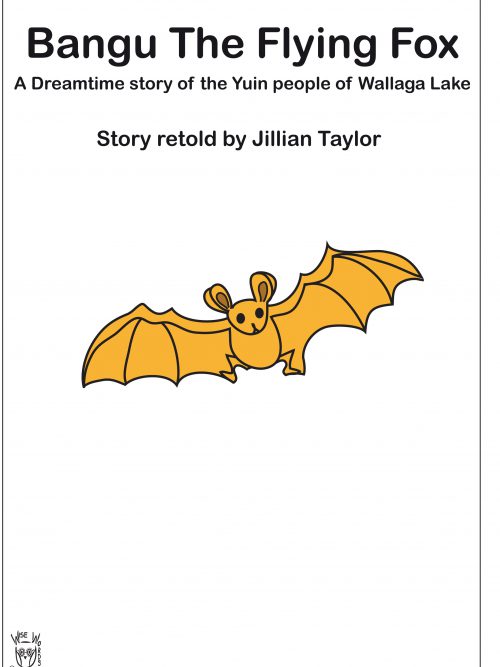 Wise Words indigenous materials have been devised to support parents, teachers and clinicians who may find it challenging to teach indigenous content because of concerns that they may not have the knowledge or understanding to ensure that the books, their stories and the complexity of the information is presented in a respectful and appropriate manner. With thanks to Tara Lewis who kindly edited these resources. Tara Lewis is a Speech Pathologist and member of Speech Pathology Australia's Aboriginal and Torres Strait Islander Advisory Committee. Tara is an Iman woman from the Taroom country of Western Queensland. The Australian Curriculum has established Aboriginal and Torres Strait Islander histories and cultures as a priority. This will ensure that Aboriginal and Torres Strait Islander students are able to see themselves, their identities and their cultures reflected in the curriculum of each of the learning areas. Exposure to these and other indigenous books can build awareness of and respect for Aboriginal and Torres Strait Islander histories and cultures amongst all Australian children. USING BOOKS TO ENHANCE A CHILD'S UNDERSTANDING AND INCREASE HIS/HER EXPRESSIVE LANGUAGE You can use a book to expand a child's • Vocabulary (world, fighting, winning, pretending, crept) • Understanding of concepts (e.g. new, many, frightened, around, lonely) • Ability to understand questions Bangu The Flying Fox details a traditional Dreaming story from the Yuin people of Wallaga Lake. Bangu explores the importance of belonging and identification. Wise Words Scripts - offer clinicians, teachers and parents readily available questions designed specifically for each book. A script provides a variety of questions at each level of understanding for each page of the book. A teacher or clinician working with a group of children can tailor questions to each child's language ability. This script and other available scripts have been based on Marion Blank's Model of Classroom Language.
Wise Words indigenous materials have been devised to support parents, teachers and clinicians who may find it challenging to teach indigenous content because of concerns that they may not have the knowledge or understanding to ensure that the books, their stories and the complexity of the information is presented in a respectful and appropriate manner. With thanks to Tara Lewis who kindly edited these resources. Tara Lewis is a Speech Pathologist and member of Speech Pathology Australia's Aboriginal and Torres Strait Islander Advisory Committee. Tara is an Iman woman from the Taroom country of Western Queensland. The Australian Curriculum has established Aboriginal and Torres Strait Islander histories and cultures as a priority. This will ensure that Aboriginal and Torres Strait Islander students are able to see themselves, their identities and their cultures reflected in the curriculum of each of the learning areas. Exposure to these and other indigenous books can build awareness of and respect for Aboriginal and Torres Strait Islander histories and cultures amongst all Australian children. USING BOOKS TO ENHANCE A CHILD'S UNDERSTANDING AND INCREASE HIS/HER EXPRESSIVE LANGUAGE You can use a book to expand a child's • Vocabulary (world, fighting, winning, pretending, crept) • Understanding of concepts (e.g. new, many, frightened, around, lonely) • Ability to understand questions Bangu The Flying Fox details a traditional Dreaming story from the Yuin people of Wallaga Lake. Bangu explores the importance of belonging and identification. Wise Words Scripts - offer clinicians, teachers and parents readily available questions designed specifically for each book. A script provides a variety of questions at each level of understanding for each page of the book. A teacher or clinician working with a group of children can tailor questions to each child's language ability. This script and other available scripts have been based on Marion Blank's Model of Classroom Language. -
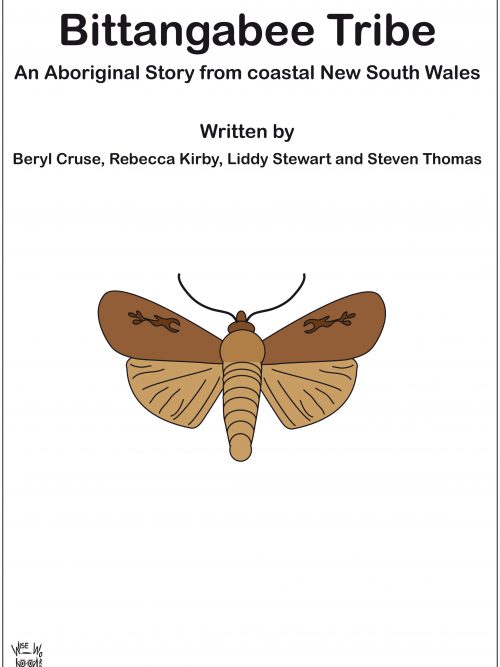 Wise Words indigenous materials have been devised to support parents, teachers and clinicians who may find it challenging to teach indigenous content because of concerns that they may not have the knowledge or understanding to ensure that the books, their stories and the complexity of the information is presented in a respectful and appropriate manner. With thanks to Tara Lewis who kindly edited these resources. Tara Lewis is a Speech Pathologist and member of Speech Pathology Australia's Aboriginal and Torres Strait Islander Advisory Committee. Tara is an Iman woman from the Taroom country of Western Queensland. The Australian Curriculum has established Aboriginal and Torres Strait Islander histories and cultures as a priority. This will ensure that Aboriginal and Torres Strait Islander students are able to see themselves, their identities and their cultures reflected in the curriculum of each of the learning areas. Exposure to these and other indigenous books can build awareness of and respect for Aboriginal and Torres Strait Islander histories and cultures amongst all Australian children. USING BOOKS TO ENHANCE A CHILD'S UNDERSTANDING AND INCREASE HIS/HER EXPRESSIVE LANGUAGE You can use a book to expand a child's • Vocabulary (warrior, coast, oysters, tribes, corroborees, trade, hovering) • Understanding of concepts (e.g. often, wise, great, fresh) • Ability to understand questions Bittangabee Tribe is based around important aspects of traditional Aboriginal life. The book describes the lives of an aboriginal family on the south coast of NSW. The story follows the family on their annual journey into the mountains to meet with other groups and their return to their home near the sea. Wise Words Scripts - offer clinicians, teachers and parents readily available questions designed specifically for each book. A script provides a variety of questions at each level of understanding for each page of the book. A teacher or clinician working with a group of children can tailor questions to each child's language ability. This script and other available scripts have been based on Marion Blank's Model of Classroom Language.
Wise Words indigenous materials have been devised to support parents, teachers and clinicians who may find it challenging to teach indigenous content because of concerns that they may not have the knowledge or understanding to ensure that the books, their stories and the complexity of the information is presented in a respectful and appropriate manner. With thanks to Tara Lewis who kindly edited these resources. Tara Lewis is a Speech Pathologist and member of Speech Pathology Australia's Aboriginal and Torres Strait Islander Advisory Committee. Tara is an Iman woman from the Taroom country of Western Queensland. The Australian Curriculum has established Aboriginal and Torres Strait Islander histories and cultures as a priority. This will ensure that Aboriginal and Torres Strait Islander students are able to see themselves, their identities and their cultures reflected in the curriculum of each of the learning areas. Exposure to these and other indigenous books can build awareness of and respect for Aboriginal and Torres Strait Islander histories and cultures amongst all Australian children. USING BOOKS TO ENHANCE A CHILD'S UNDERSTANDING AND INCREASE HIS/HER EXPRESSIVE LANGUAGE You can use a book to expand a child's • Vocabulary (warrior, coast, oysters, tribes, corroborees, trade, hovering) • Understanding of concepts (e.g. often, wise, great, fresh) • Ability to understand questions Bittangabee Tribe is based around important aspects of traditional Aboriginal life. The book describes the lives of an aboriginal family on the south coast of NSW. The story follows the family on their annual journey into the mountains to meet with other groups and their return to their home near the sea. Wise Words Scripts - offer clinicians, teachers and parents readily available questions designed specifically for each book. A script provides a variety of questions at each level of understanding for each page of the book. A teacher or clinician working with a group of children can tailor questions to each child's language ability. This script and other available scripts have been based on Marion Blank's Model of Classroom Language. -
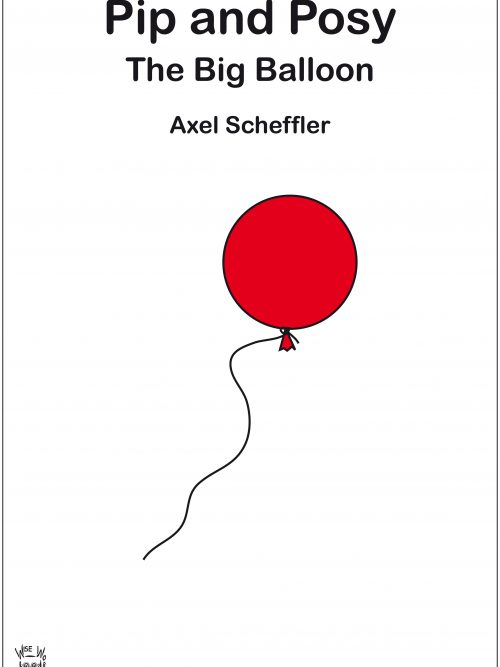 USING BOOKS TO ENHANCE A CHILD'S UNDERSTANDING AND INCREASE HIS/HER EXPRESSIVE LANGUAGE You can use a book to expand a child's • Vocabulary (stool, kennel, basket, sty, reaching, searching) • Understanding of concepts (e.g. big - little, wet - dry, nearly, scary, funny) • Ability to understand questions Wise Words Scripts - offer clinicians, teachers and parents readily available questions designed specifically for each book. A script provides a variety of questions at each level of understanding for each page of the book. A teacher or clinician working with a group of children can tailor questions to each child's language ability. This script and other available scripts have been based on Marion Blank's Model of Classroom Language. Marion Blank recognised the importance of keeping questions and statements within a child’s level of understanding. The more concrete the statement or question, the easier it will be for the child to understand. As questions become more abstract, they become harder for children to answer. The Blank Model is divided into 4 levels of questioning, moving from the concrete (easiest) at Level 1 to the abstract (most difficult) at Level 4.
USING BOOKS TO ENHANCE A CHILD'S UNDERSTANDING AND INCREASE HIS/HER EXPRESSIVE LANGUAGE You can use a book to expand a child's • Vocabulary (stool, kennel, basket, sty, reaching, searching) • Understanding of concepts (e.g. big - little, wet - dry, nearly, scary, funny) • Ability to understand questions Wise Words Scripts - offer clinicians, teachers and parents readily available questions designed specifically for each book. A script provides a variety of questions at each level of understanding for each page of the book. A teacher or clinician working with a group of children can tailor questions to each child's language ability. This script and other available scripts have been based on Marion Blank's Model of Classroom Language. Marion Blank recognised the importance of keeping questions and statements within a child’s level of understanding. The more concrete the statement or question, the easier it will be for the child to understand. As questions become more abstract, they become harder for children to answer. The Blank Model is divided into 4 levels of questioning, moving from the concrete (easiest) at Level 1 to the abstract (most difficult) at Level 4. -
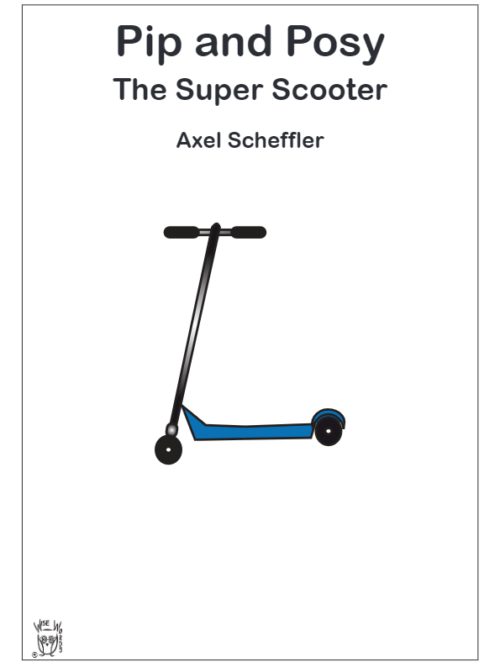 USING BOOKS TO ENHANCE A CHILD'S UNDERSTANDING AND INCREASE HIS/HER EXPRESSIVE LANGUAGE You can use a book to expand a child's • vocabulary (appeared, snatched, sore, tricks) • understanding of concepts (e.g. fast, easy, careful, soft) • ability to understand questions Wise Words Scripts - offer clinicians, teachers and parents readily available questions designed specifically for each book. A script provides a variety of questions at each level of understanding for each page of the book. A teacher or clinician working with a group of children can tailor questions to each child's language ability. This script and other available scripts have been based on Marion Blank's Model of Classroom Language. Marion Blank recognised the importance of keeping questions and statements within a child’s level of understanding. The more concrete the statement or question, the easier it will be for the child to understand. As questions become more abstract, they become harder for children to answer. The Blank Model is divided into 4 levels of questioning, moving from the concrete (easiest) at Level 1 to the abstract (most difficult) at Level 4.
USING BOOKS TO ENHANCE A CHILD'S UNDERSTANDING AND INCREASE HIS/HER EXPRESSIVE LANGUAGE You can use a book to expand a child's • vocabulary (appeared, snatched, sore, tricks) • understanding of concepts (e.g. fast, easy, careful, soft) • ability to understand questions Wise Words Scripts - offer clinicians, teachers and parents readily available questions designed specifically for each book. A script provides a variety of questions at each level of understanding for each page of the book. A teacher or clinician working with a group of children can tailor questions to each child's language ability. This script and other available scripts have been based on Marion Blank's Model of Classroom Language. Marion Blank recognised the importance of keeping questions and statements within a child’s level of understanding. The more concrete the statement or question, the easier it will be for the child to understand. As questions become more abstract, they become harder for children to answer. The Blank Model is divided into 4 levels of questioning, moving from the concrete (easiest) at Level 1 to the abstract (most difficult) at Level 4. -
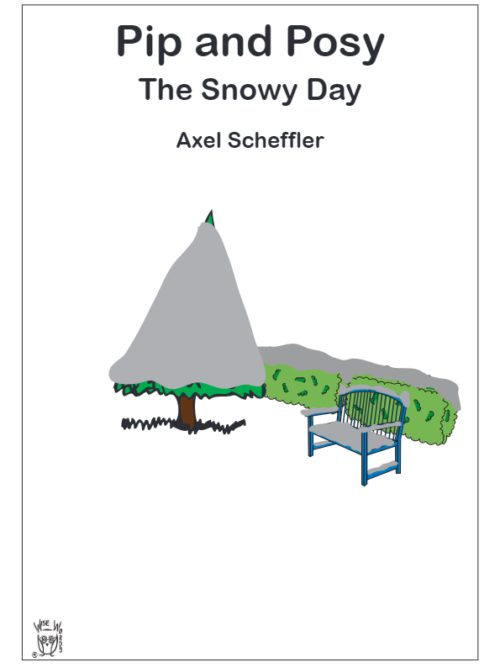 USING BOOKS TO ENHANCE A CHILD'S UNDERSTANDING AND INCREASE HIS/HER EXPRESSIVE LANGUAGE You can use a book to expand a child's • vocabulary (snow, waterproof, mittens, snowflakes, sorry, footprints) • understanding of concepts (e.g. warm, comfy, cold, kind) • ability to understand questions Wise Words Scripts - offer clinicians, teachers and parents readily available questions designed specifically for each book. A script provides a variety of questions at each level of understanding for each page of the book. A teacher or clinician working with a group of children can tailor questions to each child's language ability. This script and other available scripts have been based on Marion Blank's Model of Classroom Language. Marion Blank recognised the importance of keeping questions and statements within a child’s level of understanding. The more concrete the statement or question, the easier it will be for the child to understand. As questions become more abstract, they become harder for children to answer. The Blank Model is divided into 4 levels of questioning, moving from the concrete (easiest) at Level 1 to the abstract (most difficult) at Level 4.
USING BOOKS TO ENHANCE A CHILD'S UNDERSTANDING AND INCREASE HIS/HER EXPRESSIVE LANGUAGE You can use a book to expand a child's • vocabulary (snow, waterproof, mittens, snowflakes, sorry, footprints) • understanding of concepts (e.g. warm, comfy, cold, kind) • ability to understand questions Wise Words Scripts - offer clinicians, teachers and parents readily available questions designed specifically for each book. A script provides a variety of questions at each level of understanding for each page of the book. A teacher or clinician working with a group of children can tailor questions to each child's language ability. This script and other available scripts have been based on Marion Blank's Model of Classroom Language. Marion Blank recognised the importance of keeping questions and statements within a child’s level of understanding. The more concrete the statement or question, the easier it will be for the child to understand. As questions become more abstract, they become harder for children to answer. The Blank Model is divided into 4 levels of questioning, moving from the concrete (easiest) at Level 1 to the abstract (most difficult) at Level 4. -
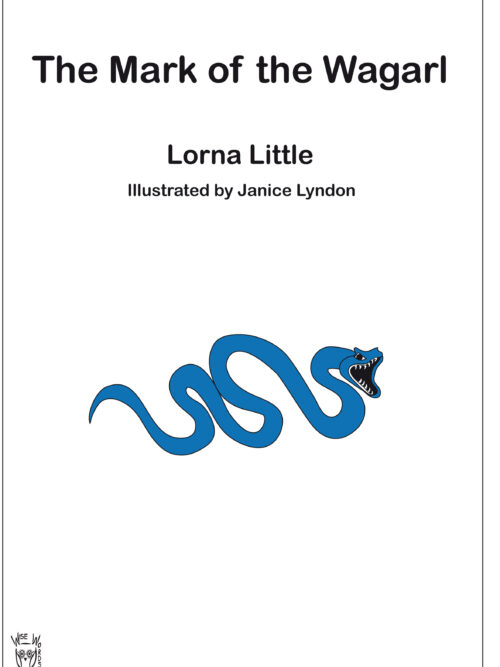 Wise Words indigenous materials have been devised to support parents, teachers and clinicians who may find it challenging to teach indigenous content because of concerns that they may not have the knowledge or understanding to ensure that the books, their stories and the complexity of the information is presented in a respectful and appropriate manner. With thanks to Joedie Lawler who kindly edited these resources. Joedie Lawler is a Biripi woman from Taree who has strong connections to her country and culture. She has advocated in cultural heritage for the past 25 years. Joedie is a teacher of weaving and art who shares her skills and knowledge through her work with the Ngarra Consultancy. The Ngarra Consultancy is an Aboriginal owned and operated business that assists appropriate engagement understanding and experience of Aboriginal culture. The Australian Curriculum has established Aboriginal and Torres Strait Islander histories and cultures as a priority. This will ensure that Aboriginal and Torres Strait Islander students are able to see themselves, their identities and their cultures reflected in the curriculum of each of the learning areas. Exposure to these and other indigenous books can build awareness of and respect for Aboriginal and Torres Strait Islander histories and cultures amongst all Australian children. USING BOOKS TO ENHANCE A CHILD’S UNDERSTANDING AND INCREASE HIS/HER EXPRESSIVE LANGUAGE You can use a book to expand a child’s • Vocabulary (totem, generation, birthmark, kingfish, birdiya, sacred, cave) • Understanding of concepts (e.g. promise, slimy, grateful, silently, clean) • Ability to understand questions The Mark of the Wagarl - Maadjit Wagarl is the sacred water snake and guardian spirit of all the rivers and fresh waters of Australias Nyoongar Country. This is the story of how a little boy questioned the wisdom of his elders and why he received the Wagarl for his totem. Wise Words Scripts - offer clinicians, teachers and parents readily available questions designed specifically for each book. A script provides a variety of questions at each level of understanding for each page of the book. A teacher or clinician working with a group of children can tailor questions to each child's language ability. This script and other available scripts have been based on Marion Blank's Model of Classroom Language.
Wise Words indigenous materials have been devised to support parents, teachers and clinicians who may find it challenging to teach indigenous content because of concerns that they may not have the knowledge or understanding to ensure that the books, their stories and the complexity of the information is presented in a respectful and appropriate manner. With thanks to Joedie Lawler who kindly edited these resources. Joedie Lawler is a Biripi woman from Taree who has strong connections to her country and culture. She has advocated in cultural heritage for the past 25 years. Joedie is a teacher of weaving and art who shares her skills and knowledge through her work with the Ngarra Consultancy. The Ngarra Consultancy is an Aboriginal owned and operated business that assists appropriate engagement understanding and experience of Aboriginal culture. The Australian Curriculum has established Aboriginal and Torres Strait Islander histories and cultures as a priority. This will ensure that Aboriginal and Torres Strait Islander students are able to see themselves, their identities and their cultures reflected in the curriculum of each of the learning areas. Exposure to these and other indigenous books can build awareness of and respect for Aboriginal and Torres Strait Islander histories and cultures amongst all Australian children. USING BOOKS TO ENHANCE A CHILD’S UNDERSTANDING AND INCREASE HIS/HER EXPRESSIVE LANGUAGE You can use a book to expand a child’s • Vocabulary (totem, generation, birthmark, kingfish, birdiya, sacred, cave) • Understanding of concepts (e.g. promise, slimy, grateful, silently, clean) • Ability to understand questions The Mark of the Wagarl - Maadjit Wagarl is the sacred water snake and guardian spirit of all the rivers and fresh waters of Australias Nyoongar Country. This is the story of how a little boy questioned the wisdom of his elders and why he received the Wagarl for his totem. Wise Words Scripts - offer clinicians, teachers and parents readily available questions designed specifically for each book. A script provides a variety of questions at each level of understanding for each page of the book. A teacher or clinician working with a group of children can tailor questions to each child's language ability. This script and other available scripts have been based on Marion Blank's Model of Classroom Language. -
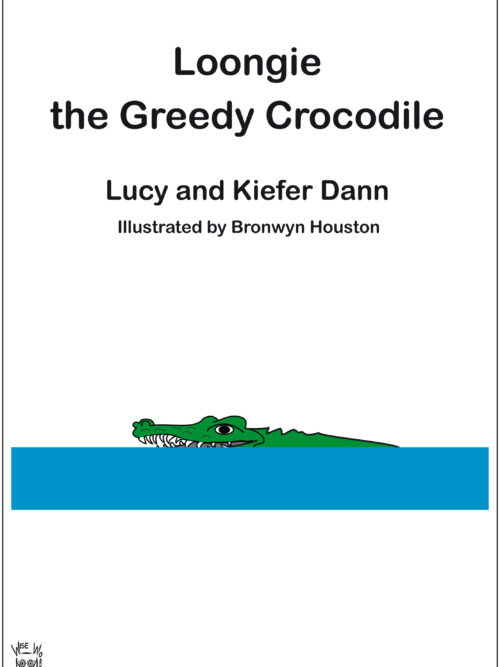 Wise Words indigenous materials have been devised to support parents, teachers and clinicians who may find it challenging to teach indigenous content because of concerns that they may not have the knowledge or understanding to ensure that the books, their stories and the complexity of the information is presented in a respectful and appropriate manner. With thanks to Joedie Lawler who kindly edited these resources. Joedie Lawler is a Biripi woman from Taree who has strong connections to her country and culture. She has advocated in cultural heritage for the past 25 years. Joedie is a teacher of weaving and art who shares her skills and knowledge through her work with the Ngarra Consultancy. The Ngarra Consultancy is an Aboriginal owned and operated business that assists appropriate engagement understanding and experience of Aboriginal culture. The Australian Curriculum has established Aboriginal and Torres Strait Islander histories and cultures as a priority. This will ensure that Aboriginal and Torres Strait Islander students are able to see themselves, their identities and their cultures reflected in the curriculum of each of the learning areas. Exposure to these and other indigenous books can build awareness of and respect for Aboriginal and Torres Strait Islander histories and cultures amongst all Australian children. USING BOOKS TO ENHANCE A CHILD’S UNDERSTANDING AND INCREASE HIS/HER EXPRESSIVE LANGUAGE You can use a book to expand a child’s • Vocabulary (hero, mangrove, creek, grumble, shellfish, search, glide, perch) • Understanding of concepts (e.g. greedy, slimy, strange, safe, hard, broken) • Ability to understand questions Loongie the Greedy Crocodile - Loongie is a greedy saltwater crocodile who lives among the mangroves at Walaman Creek in the remote Kimberley region of Western Australia. He has no friends and no-one will come near the creek while he’s around. Loongie soon learns why being greedy has its consequences. Wise Words Scripts - offer clinicians, teachers and parents readily available questions designed specifically for each book. A script provides a variety of questions at each level of understanding for each page of the book. A teacher or clinician working with a group of children can tailor questions to each child's language ability. This script and other available scripts have been based on Marion Blank's Model of Classroom Language.
Wise Words indigenous materials have been devised to support parents, teachers and clinicians who may find it challenging to teach indigenous content because of concerns that they may not have the knowledge or understanding to ensure that the books, their stories and the complexity of the information is presented in a respectful and appropriate manner. With thanks to Joedie Lawler who kindly edited these resources. Joedie Lawler is a Biripi woman from Taree who has strong connections to her country and culture. She has advocated in cultural heritage for the past 25 years. Joedie is a teacher of weaving and art who shares her skills and knowledge through her work with the Ngarra Consultancy. The Ngarra Consultancy is an Aboriginal owned and operated business that assists appropriate engagement understanding and experience of Aboriginal culture. The Australian Curriculum has established Aboriginal and Torres Strait Islander histories and cultures as a priority. This will ensure that Aboriginal and Torres Strait Islander students are able to see themselves, their identities and their cultures reflected in the curriculum of each of the learning areas. Exposure to these and other indigenous books can build awareness of and respect for Aboriginal and Torres Strait Islander histories and cultures amongst all Australian children. USING BOOKS TO ENHANCE A CHILD’S UNDERSTANDING AND INCREASE HIS/HER EXPRESSIVE LANGUAGE You can use a book to expand a child’s • Vocabulary (hero, mangrove, creek, grumble, shellfish, search, glide, perch) • Understanding of concepts (e.g. greedy, slimy, strange, safe, hard, broken) • Ability to understand questions Loongie the Greedy Crocodile - Loongie is a greedy saltwater crocodile who lives among the mangroves at Walaman Creek in the remote Kimberley region of Western Australia. He has no friends and no-one will come near the creek while he’s around. Loongie soon learns why being greedy has its consequences. Wise Words Scripts - offer clinicians, teachers and parents readily available questions designed specifically for each book. A script provides a variety of questions at each level of understanding for each page of the book. A teacher or clinician working with a group of children can tailor questions to each child's language ability. This script and other available scripts have been based on Marion Blank's Model of Classroom Language. -
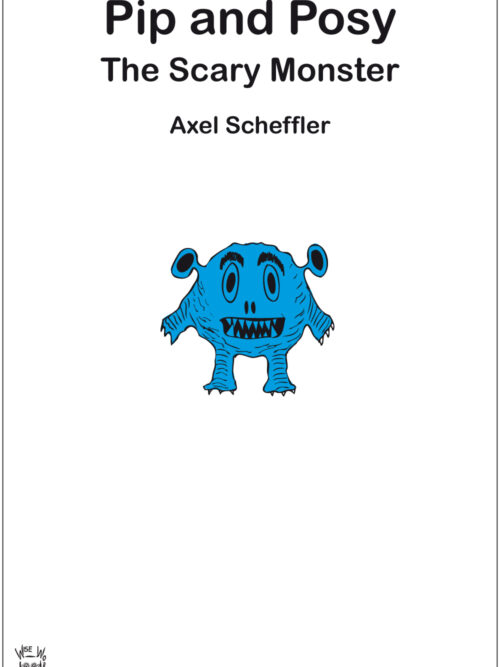 USING BOOKS TO ENHANCE A CHILD’S UNDERSTANDING AND INCREASE HIS/HER EXPRESSIVE LANGUAGE You can use a book to expand a child’s • Vocabulary (costume, monster, apron, knock, crying, waiting) • Understanding of concepts (sorry, bored, scary) • Ability to understand questions Wise Words Scripts – offer clinicians, teachers and parents readily available questions designed specifically for each book. A script provides a variety of questions at each level of understanding for each page of the book. A teacher or clinician working with a group of children can tailor questions to each child’s language ability. This script and other available scripts have been based on Marion Blank’s Model of Classroom Language. Marion Blank recognised the importance of keeping questions and statements within a child’s level of understanding. The more concrete the statement or question, the easier it will be for the child to understand. As questions become more abstract, they become harder for children to answer. The Blank Model is divided into 4 levels of questioning, moving from the concrete (easiest) at Level 1 to the abstract (most difficult) at Level 4. All Wise Words Programs are sent as a download unless otherwise specified. To ship a USB, please add either Australian (A$20) or International (A$55) shipping to shopping cart.
USING BOOKS TO ENHANCE A CHILD’S UNDERSTANDING AND INCREASE HIS/HER EXPRESSIVE LANGUAGE You can use a book to expand a child’s • Vocabulary (costume, monster, apron, knock, crying, waiting) • Understanding of concepts (sorry, bored, scary) • Ability to understand questions Wise Words Scripts – offer clinicians, teachers and parents readily available questions designed specifically for each book. A script provides a variety of questions at each level of understanding for each page of the book. A teacher or clinician working with a group of children can tailor questions to each child’s language ability. This script and other available scripts have been based on Marion Blank’s Model of Classroom Language. Marion Blank recognised the importance of keeping questions and statements within a child’s level of understanding. The more concrete the statement or question, the easier it will be for the child to understand. As questions become more abstract, they become harder for children to answer. The Blank Model is divided into 4 levels of questioning, moving from the concrete (easiest) at Level 1 to the abstract (most difficult) at Level 4. All Wise Words Programs are sent as a download unless otherwise specified. To ship a USB, please add either Australian (A$20) or International (A$55) shipping to shopping cart. -
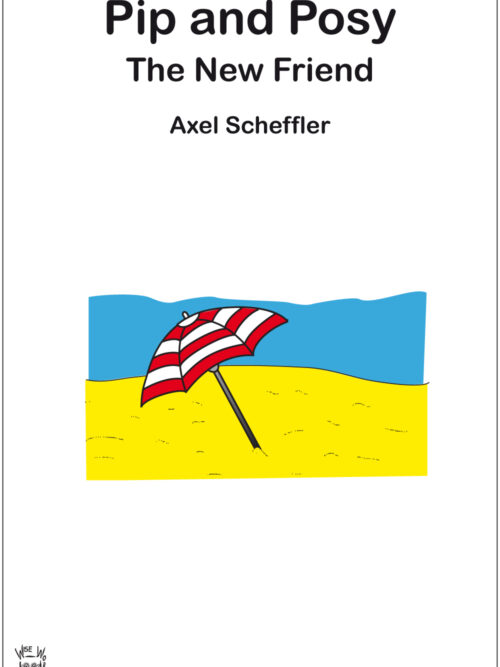 USING BOOKS TO ENHANCE A CHILD’S UNDERSTANDING AND INCREASE HIS/HER EXPRESSIVE LANGUAGE You can use a book to expand a child’s • Vocabulary (sandcastle, seagull, beach, stole, paddled, coin) • Understanding of concepts (sad, bad, little, huge) • Ability to understand questions Wise Words Scripts – offer clinicians, teachers and parents readily available questions designed specifically for each book. A script provides a variety of questions at each level of understanding for each page of the book. A teacher or clinician working with a group of children can tailor questions to each child’s language ability. This script and other available scripts have been based on Marion Blank’s Model of Classroom Language. Marion Blank recognised the importance of keeping questions and statements within a child’s level of understanding. The more concrete the statement or question, the easier it will be for the child to understand. As questions become more abstract, they become harder for children to answer. The Blank Model is divided into 4 levels of questioning, moving from the concrete (easiest) at Level 1 to the abstract (most difficult) at Level 4. All Wise Words Programs are sent as a download unless otherwise specified. To ship a USB, please add either Australian (A$20) or International (A$55) shipping to shopping cart.
USING BOOKS TO ENHANCE A CHILD’S UNDERSTANDING AND INCREASE HIS/HER EXPRESSIVE LANGUAGE You can use a book to expand a child’s • Vocabulary (sandcastle, seagull, beach, stole, paddled, coin) • Understanding of concepts (sad, bad, little, huge) • Ability to understand questions Wise Words Scripts – offer clinicians, teachers and parents readily available questions designed specifically for each book. A script provides a variety of questions at each level of understanding for each page of the book. A teacher or clinician working with a group of children can tailor questions to each child’s language ability. This script and other available scripts have been based on Marion Blank’s Model of Classroom Language. Marion Blank recognised the importance of keeping questions and statements within a child’s level of understanding. The more concrete the statement or question, the easier it will be for the child to understand. As questions become more abstract, they become harder for children to answer. The Blank Model is divided into 4 levels of questioning, moving from the concrete (easiest) at Level 1 to the abstract (most difficult) at Level 4. All Wise Words Programs are sent as a download unless otherwise specified. To ship a USB, please add either Australian (A$20) or International (A$55) shipping to shopping cart. -
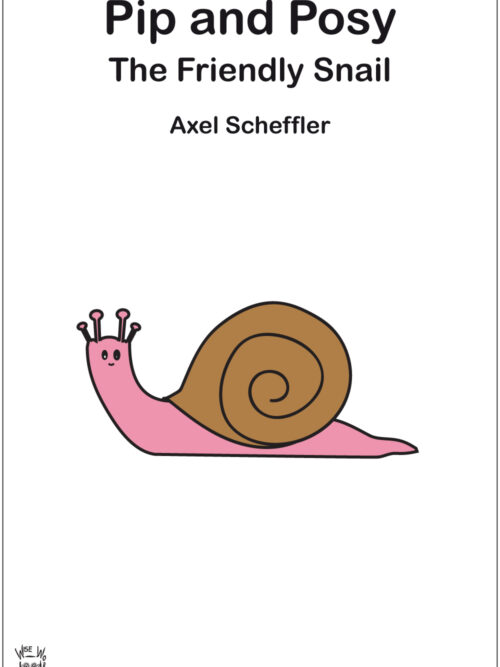 USING BOOKS TO ENHANCE A CHILD’S UNDERSTANDING AND INCREASE HIS/HER EXPRESSIVE LANGUAGE You can use a book to expand a child’s • Vocabulary (slide, snail, disappeared, shouted, raked, planted, sprinkled, roared, saved) • Understanding of concepts (fun, friendly, noisy, quiet, happy, closer, loud) • Ability to understand questions Wise Words Scripts – offer clinicians, teachers and parents readily available questions designed specifically for each book. A script provides a variety of questions at each level of understanding for each page of the book. A teacher or clinician working with a group of children can tailor questions to each child’s language ability. This script and other available scripts have been based on Marion Blank’s Model of Classroom Language. Marion Blank recognised the importance of keeping questions and statements within a child’s level of understanding. The more concrete the statement or question, the easier it will be for the child to understand. As questions become more abstract, they become harder for children to answer. The Blank Model is divided into 4 levels of questioning, moving from the concrete (easiest) at Level 1 to the abstract (most difficult) at Level 4. All Wise Words Programs are sent as a download unless otherwise specified. To ship a USB, please add either Australian (A$20) or International (A$55) shipping to shopping cart.
USING BOOKS TO ENHANCE A CHILD’S UNDERSTANDING AND INCREASE HIS/HER EXPRESSIVE LANGUAGE You can use a book to expand a child’s • Vocabulary (slide, snail, disappeared, shouted, raked, planted, sprinkled, roared, saved) • Understanding of concepts (fun, friendly, noisy, quiet, happy, closer, loud) • Ability to understand questions Wise Words Scripts – offer clinicians, teachers and parents readily available questions designed specifically for each book. A script provides a variety of questions at each level of understanding for each page of the book. A teacher or clinician working with a group of children can tailor questions to each child’s language ability. This script and other available scripts have been based on Marion Blank’s Model of Classroom Language. Marion Blank recognised the importance of keeping questions and statements within a child’s level of understanding. The more concrete the statement or question, the easier it will be for the child to understand. As questions become more abstract, they become harder for children to answer. The Blank Model is divided into 4 levels of questioning, moving from the concrete (easiest) at Level 1 to the abstract (most difficult) at Level 4. All Wise Words Programs are sent as a download unless otherwise specified. To ship a USB, please add either Australian (A$20) or International (A$55) shipping to shopping cart. -
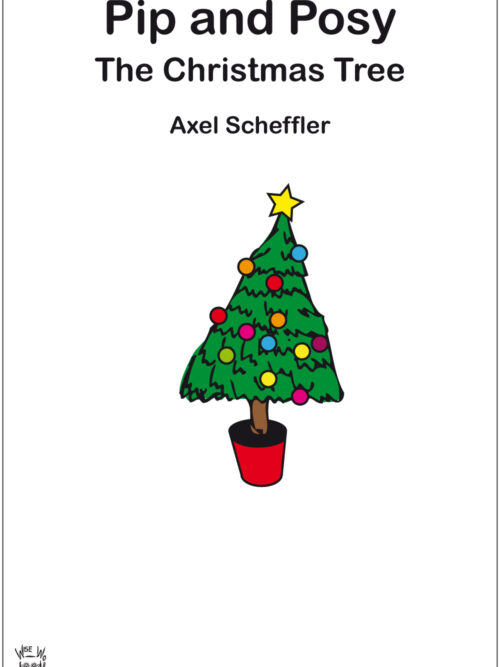 USING BOOKS TO ENHANCE A CHILD’S UNDERSTANDING AND INCREASE HIS/HER EXPRESSIVE LANGUAGE You can use a book to expand a child’s • Vocabulary (fetch, present, rainbow, Christmas, noticed, candy canes) • Understanding of concepts (beautiful, fresh, better, pretty) • Ability to understand questions Wise Words Scripts – offer clinicians, teachers and parents readily available questions designed specifically for each book. A script provides a variety of questions at each level of understanding for each page of the book. A teacher or clinician working with a group of children can tailor questions to each child’s language ability. This script and other available scripts have been based on Marion Blank’s Model of Classroom Language. Marion Blank recognised the importance of keeping questions and statements within a child’s level of understanding. The more concrete the statement or question, the easier it will be for the child to understand. As questions become more abstract, they become harder for children to answer. The Blank Model is divided into 4 levels of questioning, moving from the concrete (easiest) at Level 1 to the abstract (most difficult) at Level 4. All Wise Words Programs are sent as a download unless otherwise specified. To ship a USB, please add either Australian (A$20) or International (A$55) shipping to shopping cart.
USING BOOKS TO ENHANCE A CHILD’S UNDERSTANDING AND INCREASE HIS/HER EXPRESSIVE LANGUAGE You can use a book to expand a child’s • Vocabulary (fetch, present, rainbow, Christmas, noticed, candy canes) • Understanding of concepts (beautiful, fresh, better, pretty) • Ability to understand questions Wise Words Scripts – offer clinicians, teachers and parents readily available questions designed specifically for each book. A script provides a variety of questions at each level of understanding for each page of the book. A teacher or clinician working with a group of children can tailor questions to each child’s language ability. This script and other available scripts have been based on Marion Blank’s Model of Classroom Language. Marion Blank recognised the importance of keeping questions and statements within a child’s level of understanding. The more concrete the statement or question, the easier it will be for the child to understand. As questions become more abstract, they become harder for children to answer. The Blank Model is divided into 4 levels of questioning, moving from the concrete (easiest) at Level 1 to the abstract (most difficult) at Level 4. All Wise Words Programs are sent as a download unless otherwise specified. To ship a USB, please add either Australian (A$20) or International (A$55) shipping to shopping cart. -
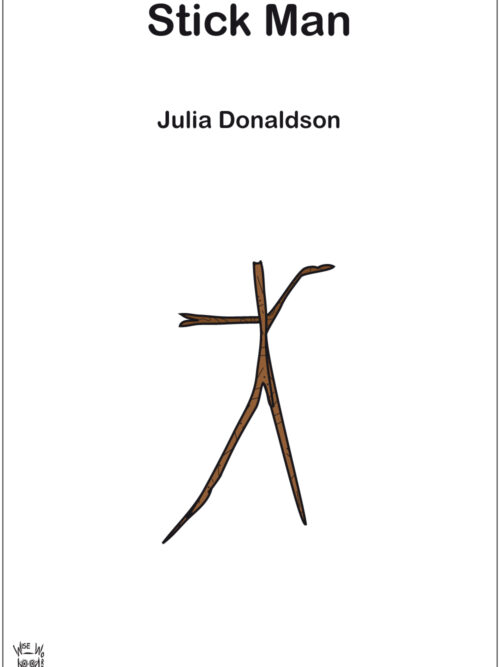 USING BOOKS TO ENHANCE A CHILD’S UNDERSTANDING AND INCREASE HIS/HER EXPRESSIVE LANGUAGE You can use a book to expand a child’s • Vocabulary (doze, clattering, jog, twirl, deserted, lead, frost, beware, mast, knight, foam) • Understanding of concepts (weary, early, excellent, overhead, lonely, faster, out) • Ability to understand questions Wise Words Scripts – offer clinicians, teachers and parents readily available questions designed specifically for each book. A script provides a variety of questions at each level of understanding for each page of the book. A teacher or clinician working with a group of children can tailor questions to each child’s language ability. This script and other available scripts have been based on Marion Blank’s Model of Classroom Language. Marion Blank recognised the importance of keeping questions and statements within a child’s level of understanding. The more concrete the statement or question, the easier it will be for the child to understand. As questions become more abstract, they become harder for children to answer. The Blank Model is divided into 4 levels of questioning, moving from the concrete (easiest) at Level 1 to the abstract (most difficult) at Level 4. All Wise Words Programs are sent as a download unless otherwise specified. To ship a USB, please add either Australian (A$20) or International (A$55) shipping to shopping cart.
USING BOOKS TO ENHANCE A CHILD’S UNDERSTANDING AND INCREASE HIS/HER EXPRESSIVE LANGUAGE You can use a book to expand a child’s • Vocabulary (doze, clattering, jog, twirl, deserted, lead, frost, beware, mast, knight, foam) • Understanding of concepts (weary, early, excellent, overhead, lonely, faster, out) • Ability to understand questions Wise Words Scripts – offer clinicians, teachers and parents readily available questions designed specifically for each book. A script provides a variety of questions at each level of understanding for each page of the book. A teacher or clinician working with a group of children can tailor questions to each child’s language ability. This script and other available scripts have been based on Marion Blank’s Model of Classroom Language. Marion Blank recognised the importance of keeping questions and statements within a child’s level of understanding. The more concrete the statement or question, the easier it will be for the child to understand. As questions become more abstract, they become harder for children to answer. The Blank Model is divided into 4 levels of questioning, moving from the concrete (easiest) at Level 1 to the abstract (most difficult) at Level 4. All Wise Words Programs are sent as a download unless otherwise specified. To ship a USB, please add either Australian (A$20) or International (A$55) shipping to shopping cart. -
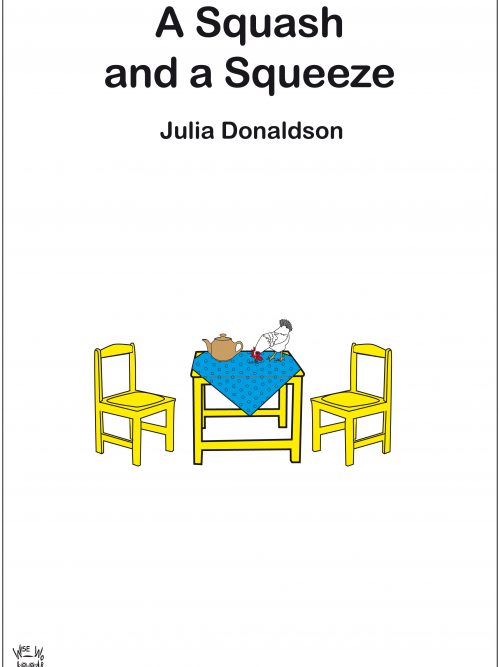 USING BOOKS TO ENHANCE A CHILD’S UNDERSTANDING AND INCREASE HIS/HER EXPRESSIVE LANGUAGE You can use a book to expand a child’s • vocabulary (frolics, jig, grumble, charged, larder, jug) • understanding of concepts (e.g. enormous, wise, curious, tiny, out) • ability to understand questions Wise Words Scripts – offer clinicians, teachers and parents readily available questions designed specifically for each book. A script provides a variety of questions at each level of understanding for each page of the book. A teacher or clinician working with a group of children can tailor questions to each child’s language ability. This script and other available scripts have been based on Marion Blank’s Model of Classroom Language. Marion Blank recognised the importance of keeping questions and statements within a child’s level of understanding. The more concrete the statement or question, the easier it will be for the child to understand. As questions become more abstract, they become harder for children to answer. The Blank Model is divided into 4 levels of questioning, moving from the concrete (easiest) at Level 1 to the abstract (most difficult) at Level 4. All Wise Words Programs are sent as a download unless otherwise specified. To ship a USB, please add either Australian (A$20) or International (A$55) shipping to shopping cart.
USING BOOKS TO ENHANCE A CHILD’S UNDERSTANDING AND INCREASE HIS/HER EXPRESSIVE LANGUAGE You can use a book to expand a child’s • vocabulary (frolics, jig, grumble, charged, larder, jug) • understanding of concepts (e.g. enormous, wise, curious, tiny, out) • ability to understand questions Wise Words Scripts – offer clinicians, teachers and parents readily available questions designed specifically for each book. A script provides a variety of questions at each level of understanding for each page of the book. A teacher or clinician working with a group of children can tailor questions to each child’s language ability. This script and other available scripts have been based on Marion Blank’s Model of Classroom Language. Marion Blank recognised the importance of keeping questions and statements within a child’s level of understanding. The more concrete the statement or question, the easier it will be for the child to understand. As questions become more abstract, they become harder for children to answer. The Blank Model is divided into 4 levels of questioning, moving from the concrete (easiest) at Level 1 to the abstract (most difficult) at Level 4. All Wise Words Programs are sent as a download unless otherwise specified. To ship a USB, please add either Australian (A$20) or International (A$55) shipping to shopping cart. -
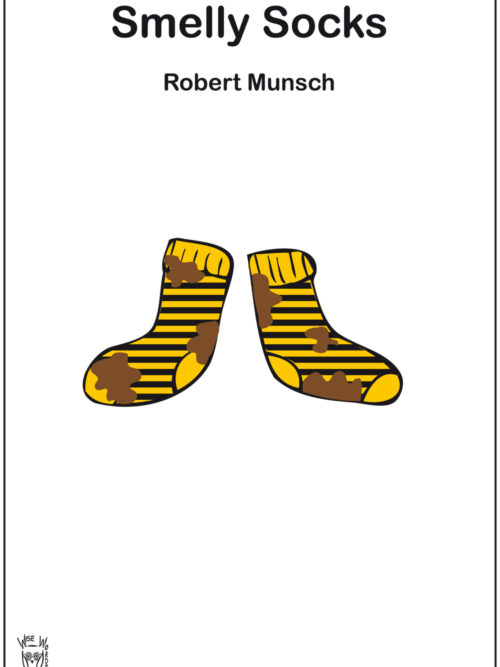 USING BOOKS TO ENHANCE A CHILD’S UNDERSTANDING AND INCREASE HIS/HER EXPRESSIVE LANGUAGE You can use a book to expand a child’s • vocabulary (rowed, forgotten, perfect, smell, raccoons, geese, skunk, beavers, splashed, promise) • understanding of concepts (across, slowly, through, wonderful, whole, dirty, nicer) • ability to understand questions Wise Words Scripts – offer clinicians, teachers and parents readily available questions designed specifically for each book. A script provides a variety of questions at each level of understanding for each page of the book. A teacher or clinician working with a group of children can tailor questions to each child’s language ability. This script and other available scripts have been based on Marion Blank’s Model of Classroom Language. Marion Blank recognised the importance of keeping questions and statements within a child’s level of understanding. The more concrete the statement or question, the easier it will be for the child to understand. As questions become more abstract, they become harder for children to answer. The Blank Model is divided into 4 levels of questioning, moving from the concrete (easiest) at Level 1 to the abstract (most difficult) at Level 4. All Wise Words Programs are sent as a download unless otherwise specified. To ship a USB, please add either Australian (A$20) or International (A$55) shipping to shopping cart.
USING BOOKS TO ENHANCE A CHILD’S UNDERSTANDING AND INCREASE HIS/HER EXPRESSIVE LANGUAGE You can use a book to expand a child’s • vocabulary (rowed, forgotten, perfect, smell, raccoons, geese, skunk, beavers, splashed, promise) • understanding of concepts (across, slowly, through, wonderful, whole, dirty, nicer) • ability to understand questions Wise Words Scripts – offer clinicians, teachers and parents readily available questions designed specifically for each book. A script provides a variety of questions at each level of understanding for each page of the book. A teacher or clinician working with a group of children can tailor questions to each child’s language ability. This script and other available scripts have been based on Marion Blank’s Model of Classroom Language. Marion Blank recognised the importance of keeping questions and statements within a child’s level of understanding. The more concrete the statement or question, the easier it will be for the child to understand. As questions become more abstract, they become harder for children to answer. The Blank Model is divided into 4 levels of questioning, moving from the concrete (easiest) at Level 1 to the abstract (most difficult) at Level 4. All Wise Words Programs are sent as a download unless otherwise specified. To ship a USB, please add either Australian (A$20) or International (A$55) shipping to shopping cart. -
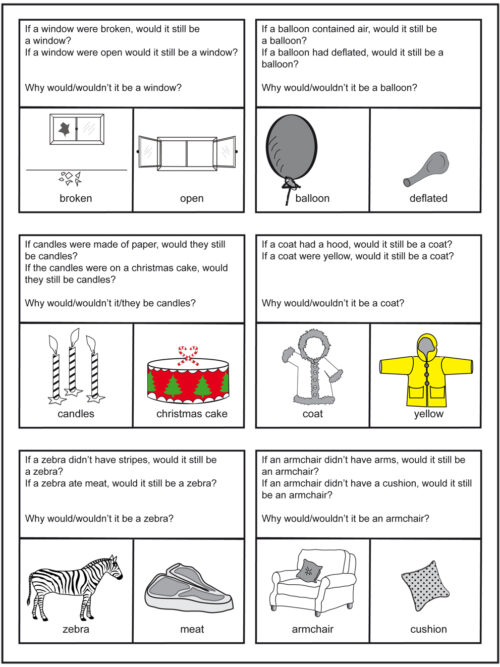
Level 4
Justifying a Decision Based on Characteristics
This program is underpinned by Marion Blank’s Model of Classroom Language. The activities presented in this program involve more complex verbal ideas and are based on Blank’s model. For your child to be able to succeed with these tasks, he will need to extend beyond what can be immediately seen or perceived. He will need to reason and make decisions based on the attributes of objects, considering possibilities which may not be immediately obvious, reflecting on previous experiences and information. He will be required to use this information to reason and respond.
-
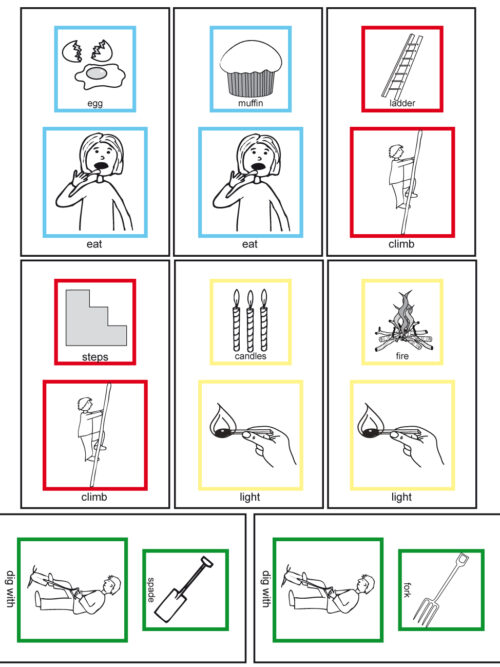
Level 2
Identifying objects according to their function/use Level 2 ““What do you use … for?” “What do you use to ...?” “What do you do with a ...?” “Find something that you can…” Scanning for an object defined by its function Level 2 “Find something that you can dig with.” “Show me something that I can use to ... .” “Point to the ones that I can drink.” “Touch the ones that you can drive.” Research indicates that we store and retrieve words more easily if they have been organised into ‘collections’. Two important ways that we can organise words are by ... Function - what we do with something (eat cake), what we use it for (cut with - scissors) or what it does (a bird flies). Semantic Class - A ‘word family’ includes groups such as food (cake, eggs, bread, cheese), wild animals (zebra, giraffe, lion, monkey), furniture (chair, bed, table, shelves). This program provides opportunities to increase your child’s verb vocabulary (action words - jump, dig, eat)..Acquisition of verbs is essential for language development as they help children combine words into phrases and sentences. Children with few verbs may go on to present with disordered language. Late talking toddlers typically have limited to no verbs in their vocabulary. Unlike objects or names (ball, dog, Mum, Hugo), verbs (run, eat, push) are transient and are more difficult for a young child to acquire. -
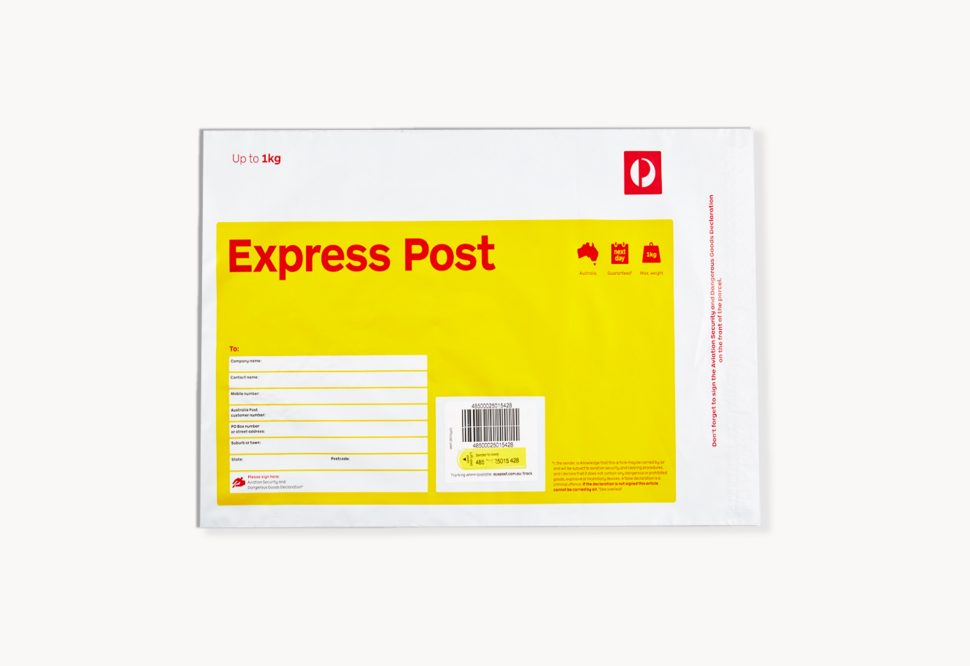 Domestic Express Post Express post guarantees next business day delivery if a delivery address is within the Express Post network on a business day (Monday to Friday). This covers 80% of Australian business addresses, private addresses and Post Office Boxes. The service operates between all capital cities (except Darwin and in Perth CBD only) and some major centres. If the address is outside Express Post network, it will be sent via the fastest possible transport links, but it won't be delivered by the next day. Although Australia Post Airmail Service guarantees reliable delivery to over 200 countries, customs procedures in other countries have been known to delay the delivery of packages.
Domestic Express Post Express post guarantees next business day delivery if a delivery address is within the Express Post network on a business day (Monday to Friday). This covers 80% of Australian business addresses, private addresses and Post Office Boxes. The service operates between all capital cities (except Darwin and in Perth CBD only) and some major centres. If the address is outside Express Post network, it will be sent via the fastest possible transport links, but it won't be delivered by the next day. Although Australia Post Airmail Service guarantees reliable delivery to over 200 countries, customs procedures in other countries have been known to delay the delivery of packages. -
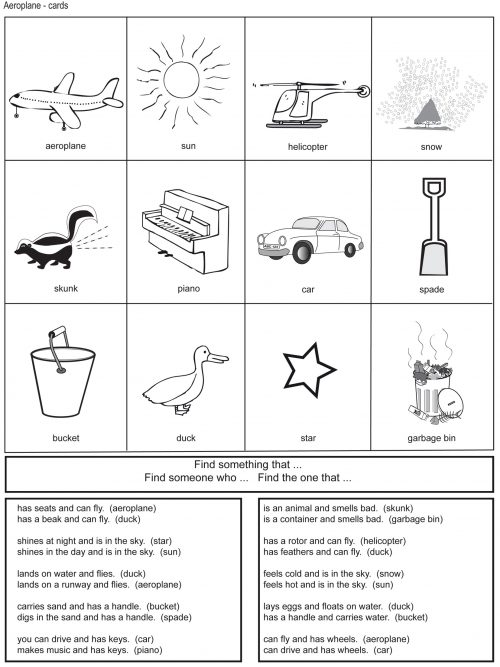
Level 2
Attending to two characteristics Level 2 “Find something that is ... and ... .” “Show me one that has ... and ... .” Understanding the function of objects Level 2 “Show me something that you can ... and has ... .” “Find one that is for ... and has ... .” Attending to two characteristics - This activity will help your child to focus on two features of an object, animal or person. It is important to make sure that your child recognises and is able to name each picture on the page before you ask him to select an item according to your description. While many children are able to recognise subtle characteristics of objects, animals or people, others may need further support to be able to attend to two characteristics at one time. Therefore, before giving your instructions, you may wish to spend some time exploring and talking about each item on the page Barrier Games - The aim of a barrier game is for one player (the Speaker) to describe his picture whilst the other player (the Listener), recreates an identical picture. The pictures are compared and adjusted (if required) after completion. A barrier is placed between the players. Two Characteristics Find the one that lands on water and flies. Show me the one that lands on a runway and flies. . Barrier Games Put the one that has seats and can fly next to the waterfall. Put the one that has a beak and can fly below the volcano. -
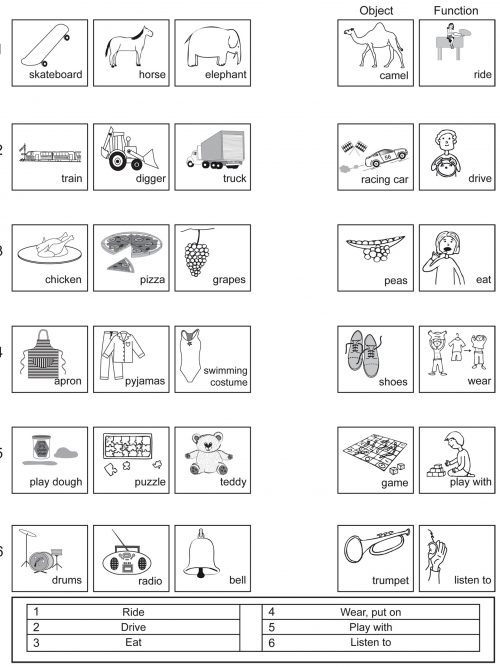
Level 2
Naming the Functions of Objects Level 2 “What do we do with this?” “What is a ... for?” “What do we use a ... for?” Completing a Sentence Level 2 “You finish what I say .. " "I kick a ...” “I eat ...” “... is for eating” These worksheets are targeted at Level 2. The activities will help your child understand the function of objects, what objects are used for and what we do with them. Research indicates that we store and retrieve words more easily if they have been organised into “collections”. Classifying is an important skill for a child to learn. Understanding the function of objects is generally the first characteristic that a child attaches to an object. Your child will quickly realise that juice is for drinking and that a bed is for sleeping in. This program ensures that your child will be able to:- Select objects according to their function.
- Sort objects with similar functions.
- Name the functions of objects.
- Identify the odd one out by recognising the object’s function.
-
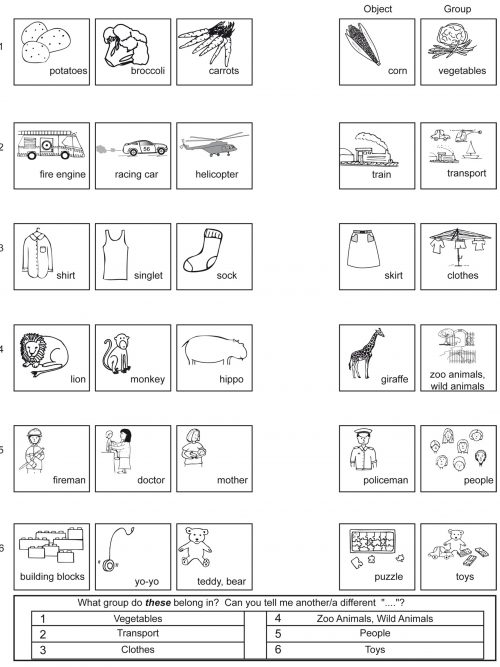
Level 2
Citing and grouping an object within a category Level 2 “Find something that is a food." "Noodles, cheese, bread - which group do these belong in?" All Wise Words Language programs are underpinned by Marion Blank’s Model of Classroom Language. This program will target Level 2 type questions and statements. Research indicates that we store and retrieve words more easily if they have been organised into “collections”. Two important ways that we can organise words are according to: Function - (what we do with something (eat cake), what we use it for (cut with scissors) or what it does (a bird flies). Semantic Class - A “word family” which includes groups such as food (cake, eggs, bread, cheese), wild animals (zebra, giraffe, lion, monkey), furniture (chair, bed, table, shelves). These worksheets have been designed to help your child recognise Semantic Categories. Your child will learn to group objects into categories and they will learn to use category labels. Example of an activity: Point to the first row of objects on the page. Encourage or help your child name each object. Say: “What group do these belong in?” “vegetable” Now ask your child to find the picture of the vegetable group and place it next to the row of vegetables. Next ask your child: “Can you tell me another vegetable?” or “Can you find me a different vegetable?” “corn” If your child cannot recall an alternative vegetable to the three already depicted, you may wish to offer him/her a choice of three other objects .... "Is a giraffe a vegetable?" "Is a train a vegetable?" "Is corn a vegetable? Yes, corn is a vegetable and corn belongs in the vegetable group." -
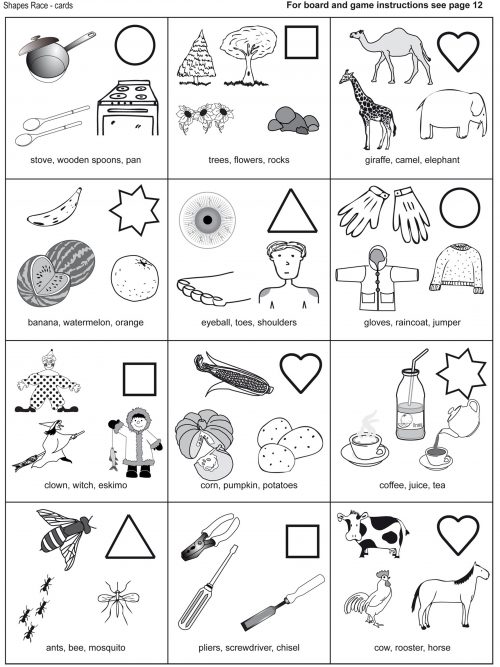
Level 2
Naming a semantic class Level 2 “A watermelon, a banana and an orange are all ...?” “What group do toes, eyeballs and shoulders belong in?” “I went shopping for new clothes. What did I buy?” Sorting according to a semantic class Level 2 “Find all the vegetables.” “Find something that is an insect.” “Show me all the farm animals.” Citing an example within a category Level 2 “Name something that is a drink.” “Tell me something that is a vegetable.” “Show me something that belongs in the transport group.” “I went to the zoo. Tell me something that I saw at the zoo.” Contents/product description - This program targets Blank’s Level 2 questions and statements. Playing the games provided in this program will help your child to understand that objects can be grouped into categories and that categories have labels (fruit, vegetables, clothes, tools, zoo animals). Playing a number of different games all targeting the same language goal will further stablise these concepts whilst ensuring that your child is engaged. Research indicates that we store and retrieve words more easily if they have been organised into ‘collections’. Working through these activities will help to increase your child’s vocabulary and improve his/her word finding skills. A child may ‘know’ a word and he may point to the appropriate object when it is named but he may not be able to retrieve the word at all or be able to retrieve the word in a timely manner. Playing the games in this program will be enjoyable for your child and should ensure that he/she repeats the tasks numerous times which will help him/her fully understand the concept. -
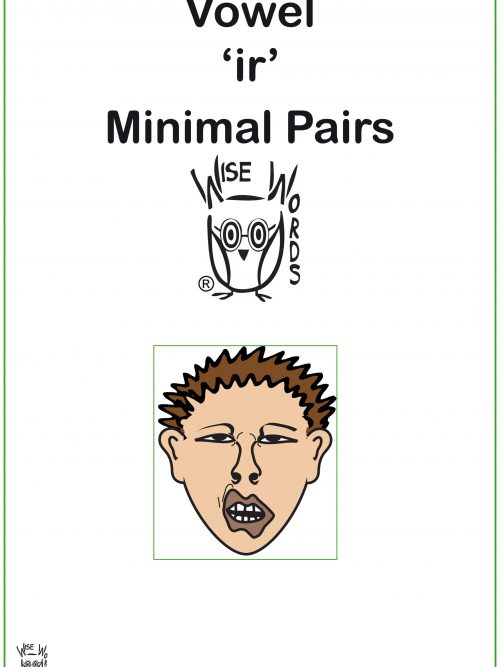
Vowel 'ir' Minimal Pairs
Using Contrastive Pairs This program uses the contrastive phonological approach of Minimal Pairs. The use of minimal pairs is supported by evidence based practice and has been shown to be an effective and efficient treatment for contrasting vowels or consonants. The minimal pair approach - Although many children progress quickly through a vowel articulation program, some children respond more quickly using a phonological approach. The minimal pair approach involves single contrastive pairings of the child’s error with the target sound. In this program the vowel ‘ir’ is contrasted with ‘or’ which most typically replaces ‘ir’. As vocabulary restrictions prevent minimal pair practice at the CV (consonant-vowel) or VC (vowel-consonant) level, it is necessary to use CVC (consonant-vowel-consonant) words as minimal pairs. It is recommended that some ‘ir’ words are not targeted in practice. This group of words should be retained as a probe for generalisation. -
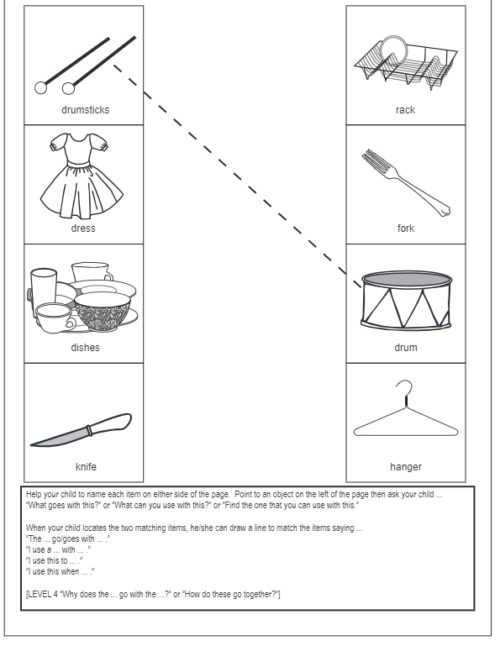
Level 3 (& Level 4)
Identifying Objects Used With Each Other Level 3 “Find the one to use with this.” “What can you use this with?” “What goes with this?” “Which objects are used together?” “Find the one that can be used with ... .” Justifying a Prediction Level 4 “Why would you use a ... to ... ?” “Why does a ... go with ... ?” “How does a ... go with ... ?” “Why should we use a ... to ... ?” Why doesn’t a ... go with ... ? This task requires a child to identify objects which can be used together. The task can be extended to Level 4 where the child is required to explain why objects are used together and why certain objects are not used together. -
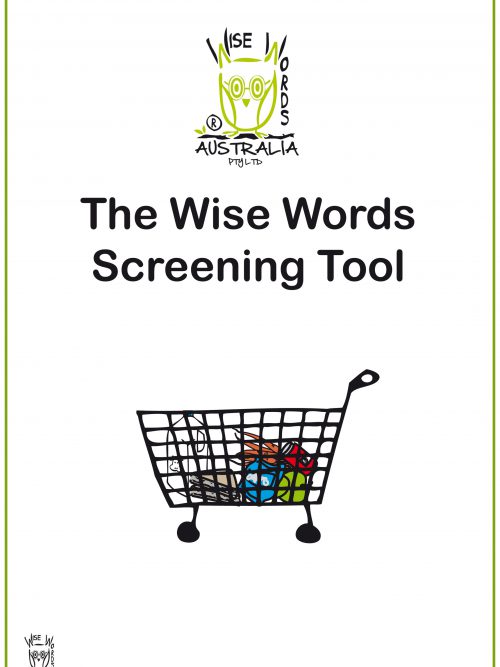 (‘Spot Bakes a Cake’ by Eric Hill) A Screening tool based on the Blank's Model of Classroom Language This simple test, based on the Blank’s Model of Classroom Language (Blank, Rose & Berlin 1978), offers teachers and clinicians a screening tool which is quick and easy to administer. The pictures in the book ‘Spot Bakes a Cake’ provide the stimulus for the questions. Contents - A range of questions/instructions represent all four levels of Blank’s model. This screener offers two questions/instructions at each level for each picture presented. Space is provided beneath these questions for the clinician/teacher to transcribe the child’s response. It is not necessary to ask every question and many children would be unable to sustain interest if all questions were posed. The questions have been arranged into two sets to ensure that a variety of question types is included in each set. For screening purposes, one set is highlighted on the test form. It is recommended that you ask only one set of questions as each set of questions will ensure that you gain a functional picture of a child’s level of understanding. This simple screening tool can be used to plan goals for children and will monitor a child’s progress over time. On completion of the screener, the clinician or teacher enters the raw score of the number of questions asked at each level and the number of correct responses. The number correct at each level is then calculated as a percentage. The criteria referred to in this screener are provided by Marion Blank et al in the following publications ... • The Language of Learning: The Preschool Years - Blank, Rose & Berlin,1978 • Preschool Language Assessment Instrument (PLAI) - Blank, Rose, Berlin, Laura, 1978 Examples of questions provided in the screener: Level 3 Selecting an object by excluding a specific object Find something that is red but is not an apple. Selecting an alternative Sally is holding a cloth. Tell me something else that she could use to pick up the cake. Describing an event that might happen Sally is reading her shopping list. What will she do next? Defining a word What is an egg? Tell me what an egg is. Identifying Similarities This is a card and this is an envelope. How are these things the same? Generalising about a set of events (Point to the bones scattered on the table.) What happened to these bones? Citing an example by excluding a set of objects Tell me something that you can’t wear.
(‘Spot Bakes a Cake’ by Eric Hill) A Screening tool based on the Blank's Model of Classroom Language This simple test, based on the Blank’s Model of Classroom Language (Blank, Rose & Berlin 1978), offers teachers and clinicians a screening tool which is quick and easy to administer. The pictures in the book ‘Spot Bakes a Cake’ provide the stimulus for the questions. Contents - A range of questions/instructions represent all four levels of Blank’s model. This screener offers two questions/instructions at each level for each picture presented. Space is provided beneath these questions for the clinician/teacher to transcribe the child’s response. It is not necessary to ask every question and many children would be unable to sustain interest if all questions were posed. The questions have been arranged into two sets to ensure that a variety of question types is included in each set. For screening purposes, one set is highlighted on the test form. It is recommended that you ask only one set of questions as each set of questions will ensure that you gain a functional picture of a child’s level of understanding. This simple screening tool can be used to plan goals for children and will monitor a child’s progress over time. On completion of the screener, the clinician or teacher enters the raw score of the number of questions asked at each level and the number of correct responses. The number correct at each level is then calculated as a percentage. The criteria referred to in this screener are provided by Marion Blank et al in the following publications ... • The Language of Learning: The Preschool Years - Blank, Rose & Berlin,1978 • Preschool Language Assessment Instrument (PLAI) - Blank, Rose, Berlin, Laura, 1978 Examples of questions provided in the screener: Level 3 Selecting an object by excluding a specific object Find something that is red but is not an apple. Selecting an alternative Sally is holding a cloth. Tell me something else that she could use to pick up the cake. Describing an event that might happen Sally is reading her shopping list. What will she do next? Defining a word What is an egg? Tell me what an egg is. Identifying Similarities This is a card and this is an envelope. How are these things the same? Generalising about a set of events (Point to the bones scattered on the table.) What happened to these bones? Citing an example by excluding a set of objects Tell me something that you can’t wear. -
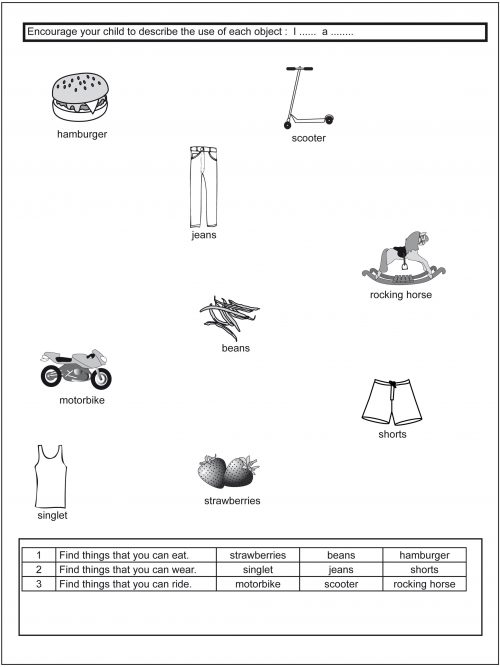
Level 2
Sorting the Functions of Objects Level 2 “What do you do with a ...?" “What do you use a ... for?” “Find me something that you can ... with.” "Find all the ones that I can wear." "Find something that I can ride on." All Wise Words Language programs are underpinned by Marion Blank’s 'Model of Classroom Language'. This program will target Level 2 questions and statements. A Level 2 question requires your child to direct her attention to the material directly in front of her, but at the same time she will need to focus more selectively on this material. Recognising the function of objects is an early concept for children. By using these worksheets, you will help your child understand how objects can be used and what objects can be used for. In addition to identifying objects which match the named function, your child is also encouraged to describe the use of the objects in their selection. Each page contains three different functions with each function represented by three different objects. -
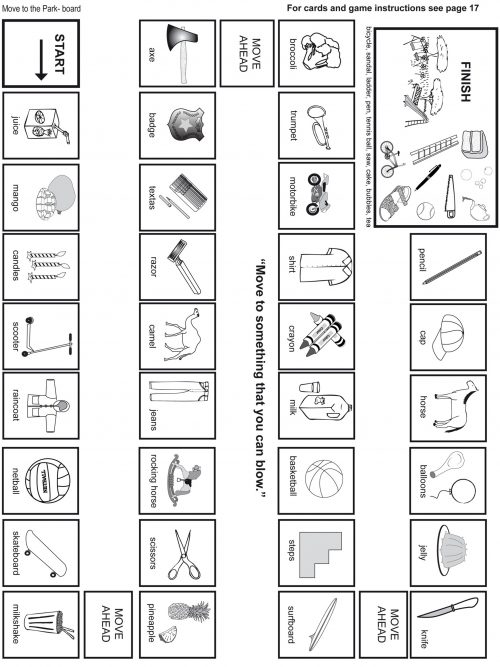
Level 2
Identifying objects according to their function/use Level 2 ““What do you use … for?” “What do you use to ...?” “What do you do with a ...?” “Find something that you can…” Scanning for an object defined by its function Level 2 “Find something that you can dig with.” “Show me something that I can use to ...” “Point to the ones that I can drink.” “Touch the ones that you can drive.” This program provides opportunities to teach more verbs and help children understand that objects have functions - Playing the games provided in this program will increase your child’s command of verbs (action words) and help to expand his/her vocabulary and sentences. Working through the provided activities will help your child understand the link between objects and functions and will ensure that he/she remains engaged in the presented tasks. Research indicates that vocabulary size is a major contributor to language development. It is important for children to make a meaningful connection between an object and an action and thus expand their vocabulary. Verbs lay the foundation for the meaning of early sentences. Providing additional connections such as understanding functions, helps a child learn and find words in a more timely manner. Example of a game: This This game does not require a die. The movement cards describe an action. These cards are cut up and placed face down in a pile next to the board. Each player takes turns to pick up a card from the pile, saying the words ... “Move to something that you can ...” The player moves his/her counter to the first square on the track which matches the action card selected. Cards are placed in the discard pile after each turn. When all the cards have been discarded, the stack should be turned over and the players continue drawing cards from the pile, creating a sentence and moving to a matching object until one player reaches the finish. -
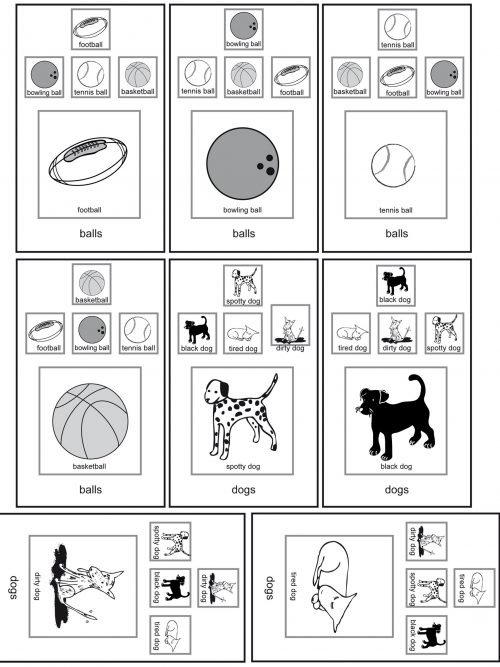
Level 2
Naming and grouping an object within a category “Find something that is a food." "Hamburger - which group does this belong in?” “Is this in the furniture group?” “Which group are you collecting?” “What belongs in your group?” Attending to two characteristics “Find something that gives milk and eats grass.” “Find something that is an animal and has a long neck.” “Find the things that grow and we can eat.” This program provides opportunities to teach the concept of semantic groups/grouping of objects. - Children learn new words more easily if they fully understand the meaning of a word. Therefore, it is important for the child to understand the semantic features and how a word can be categorised. Initially he is required to group non-identical but almost the same objects. The semantic features and similarities of each object are discussed and sorted using the ‘Group Board’. This activity gives the child a number of links to the non-identical objects (cars) or group name (e.g. fruit, transport). Discussing and comparing the semantic features of objects provides a ‘mapping’ experience to ensure that the word is learnt more successfully. This program can also be used to target and identify similarities or differences while providing the child with additional information to use inductive reasoning. Research indicates that we store and retrieve words more easily if they have been organised into ‘collections’. Two important ways that we can organise words are by ... • Function - what we do with something (eat cake), what we use it for (cut with - scissors) or what it does (a bird flies). • Semantic Class - A ‘word family’ includes groups such as food (cake, eggs, bread, cheese), wild animals (zebra, giraffe, lion, monkey), furniture (chair, bed, table, shelves). This program targets the classification of objects into Semantic Classes whilst providing the child with multiple links which they can use to retrieve the words at a later time. Initially the child is presented with objects which are similar (all balls) but not identical (e.g. football, tennis ball, bowling ball, basketball). Once a child is able to group non-identical objects into groups, the Semantic Class cards and boards are presented (e.g. food, furniture, clothes, farm animals). Contents - 34 pages including instructions. -
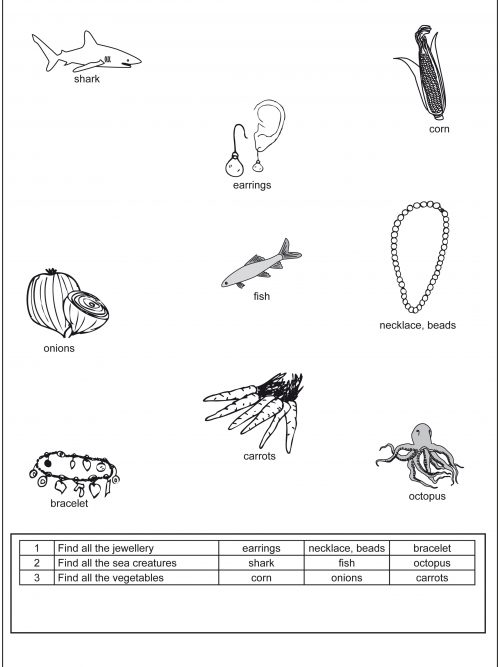
Level 2
Naming a Semantic Class Level 2 “Hamburger, cheese and bread are all ...?” “What group do hamburger,cheese and bread belong in?” “I went shopping and I saw some food.” “What food could I have seen?” Sorting According to Semantic Class Level 2 “Find all the food.” “Find something that is a food.” “Show me all the food.” All Wise Words Language programs are underpinned by Marion Blank’s “Model of Classroom Language”. This program will target Level 2 questions and statements. The activities in this program will help your child to sort materials into groups and use the collective group name for objects. Research indicates that we store and retrieve words more easily if they have been organised into “collections”. Two important ways that we can organize words are according to: Function - what we do with something (eat cake) Semantic Class - A “word family” which includes groups such as food (cake, eggs, bread) This program will focus your child’s attention on the concept of Semantic Groups. He/she will learn how to group objects into categories and how to use category labels. Three semantic groups are represented on each page and your child is required to identify the objects which belong in a specific semantic group. Example of an activity: Give your child a coloured pencil and ask him/her to find all the farm animals. Your child will circle and name each farm animal as he/she finds it on the page. Next, give your child a different coloured pencil and ask him/her to find all the fruit. Now give your child another coloured pencil and ask your child to find all the clothes. -
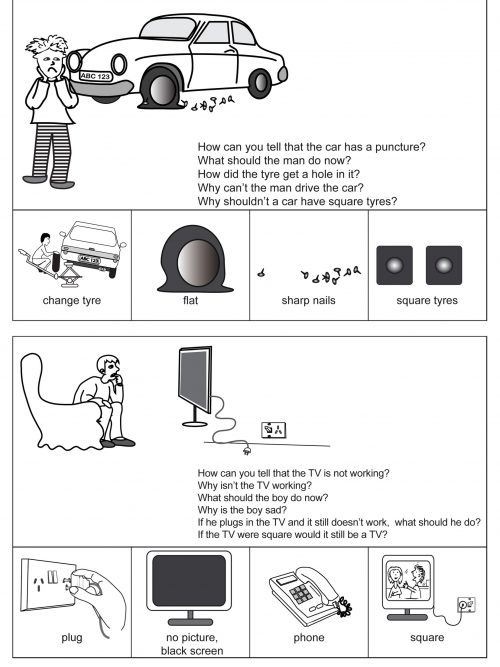
Level 4
Explaining an inference “How can you tell that ...?” “How do you know that ...?” Explaining obstacles to an action “Why can’t the ...?” “Why won’t the ...?" Formulating a solution “What could she do ...?” “What should the ... do ...?” Justifying a prediction “What will happen if ...?” “Why can’t ...?” “Why shouldn’t ...?” Justifying a decision - based on essential and non-essential characteristics “If a ... were ... would it still be ...?” “If a ... were made of ... would it still be ...? Working through this program will improve your child’s verbal organisation. The program will allow your child to attend to and process information, whilst retrieving and comparing this information to past experiences. Your child will need to compare the new verbal information with information which has already been stored. Each scene will offer him/her the opportunity to develop an understanding of more abstract language. It will also improve his/her ability to ignore non-relevant material, yet retain the relevant features or information from each scene. This program will target- Inferential Reasoning - the ability to draw a conclusion based on the facts and previous experiences.
- Problem Solving - the ability to identify obstacles and then formulate a solution to a problem.
- Justifying a Prediction - the ability to explain why an event may take place and why certain actions or behaviours should be avoided.
- Justifying a Decision - based on essential and non-essential characteristics of an object.
- How can you tell that the boy is having a haircut?
- How do you know that the hairdresser hasn’t finished cutting his hair?
- How do you know that the boy is at the hairdresser?
- Why is the boy wearing a cape?
- Why does the boy need to go to the hairdresser?
- What should the hairdresser do after the boy leaves?
-
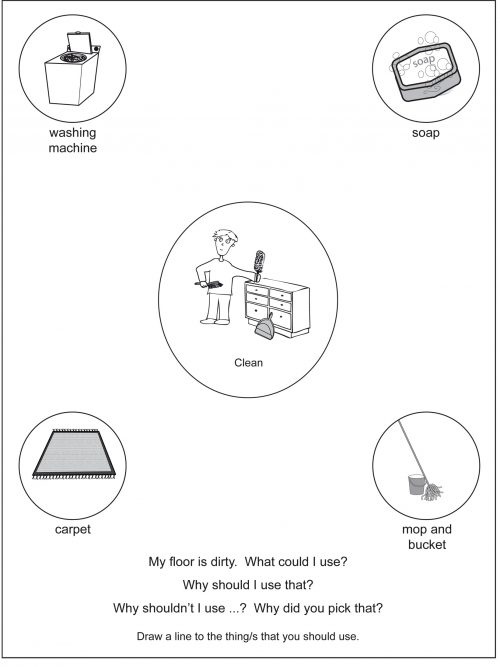
Level 4
Selecting the Means to a Goal Level 4 “What should I use to ...?” “What could I do to ...?” “What could he wear if ...?” Explaining the Means to a Goal Level 4 “Why should she use...?” “Why shouldn’t she use ..?” “Why did you pick that one?” The activities presented in this Level 4 program reflect more complex verbal problems. These activities will require your child to reason about things that may, might, could or would happen. Your will need to go beyond what can be immediately seen or perceived. He/she will need to reflect on previously gained information and use this information to solve the problem. The large circle in the middle of the page contains the “problem” which your child will need to solve. This picture will set the scene for your child but it will not give your child the answer to the question. Possible solutions to each problem are located in the four smaller circles which are placed in each corner of the page. Some solutions have been chosen in order to deliberately challenge your child. For your child to offer the correct solution they will have had to completely understand the statement and understand the question. Example of a problem: This problem is related to cleaning the floor.The following solutions are offered: A washing machine - this is something used for cleaning clothes. Soap - again something for cleaning. A carpet - something that is found on the floor. A mop and bucket - the correct answer for cleaning the floor. -
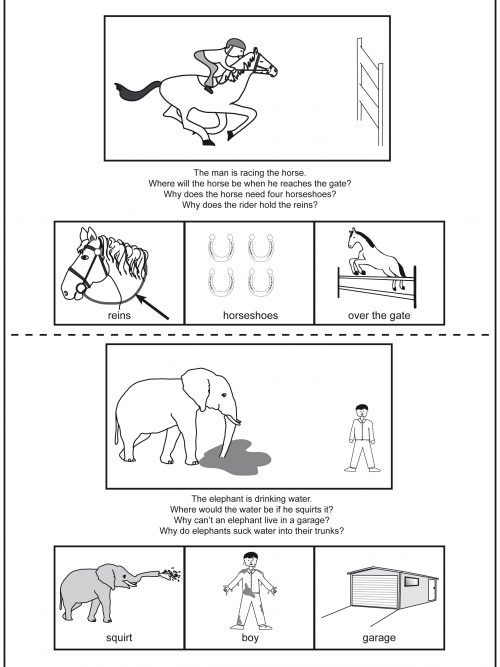
Level 4
Predicting changes in position “What will you see if ...?” “Where will the ... be if ...?” Explaining the means to a goal “Why did the ...?” “Why should he ...?” Explaining obstacles to an action “Why can’t the helicopter ...?” “Why won’t the ...?” This program can be used with both readers and non-readers alike. If a child can read, it is suggested that the ‘without words’ version is used to avoid reliance on the written prompt. Parents or carers have access to the written label in order to guide their child with each task. It is important for the parent, teacher or clinician to lead the child towards the salient features of the presented information. Point to a picture, parts of a picture or break down the statements into simple content in order to give the child an opportunity to understand. If your child appears to be struggling with the questions, it is essential to talk more but at a simple level of understanding so that the child reaches the appropriate response by himself. Rephrasing the information will ensure that he is able to draw on past experiences or make inferences. This should help him to understand the question and then offer a solution. -
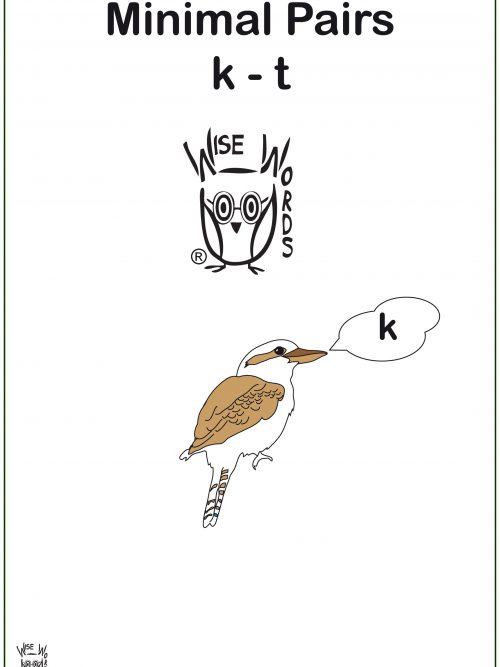 Using Contrastive Pairs Although many children may progress quickly through a regular articulation program, some respond better using a phonological approach. This program uses the contrastive phonological approach of Minimal Pairs. The use of Minimal Pairs is supported by evidence-based practice and has been shown to be an effective and efficient treatment for contrasting vowels or consonants. Once the ‘k’ sound has been established in single, meaningful words, this program can be used. It will help your child hear and use the sound correctly to affect a change in meaning. Although your child is generally able to identify your ‘k’ productions, he may use the error sound ‘t’ for any ‘k’ words. e.g. He may say ... ‘tea’ when he means to say ‘key’ ‘luttee’ when he means to say ‘lucky’ ‘beat’ when he means to say ‘beak’ As he says the words, he may not recognise that he is using an incorrect sound. These sound errors can affect his intelligibility and will change the meaning in his connected speech.
Using Contrastive Pairs Although many children may progress quickly through a regular articulation program, some respond better using a phonological approach. This program uses the contrastive phonological approach of Minimal Pairs. The use of Minimal Pairs is supported by evidence-based practice and has been shown to be an effective and efficient treatment for contrasting vowels or consonants. Once the ‘k’ sound has been established in single, meaningful words, this program can be used. It will help your child hear and use the sound correctly to affect a change in meaning. Although your child is generally able to identify your ‘k’ productions, he may use the error sound ‘t’ for any ‘k’ words. e.g. He may say ... ‘tea’ when he means to say ‘key’ ‘luttee’ when he means to say ‘lucky’ ‘beat’ when he means to say ‘beak’ As he says the words, he may not recognise that he is using an incorrect sound. These sound errors can affect his intelligibility and will change the meaning in his connected speech.

